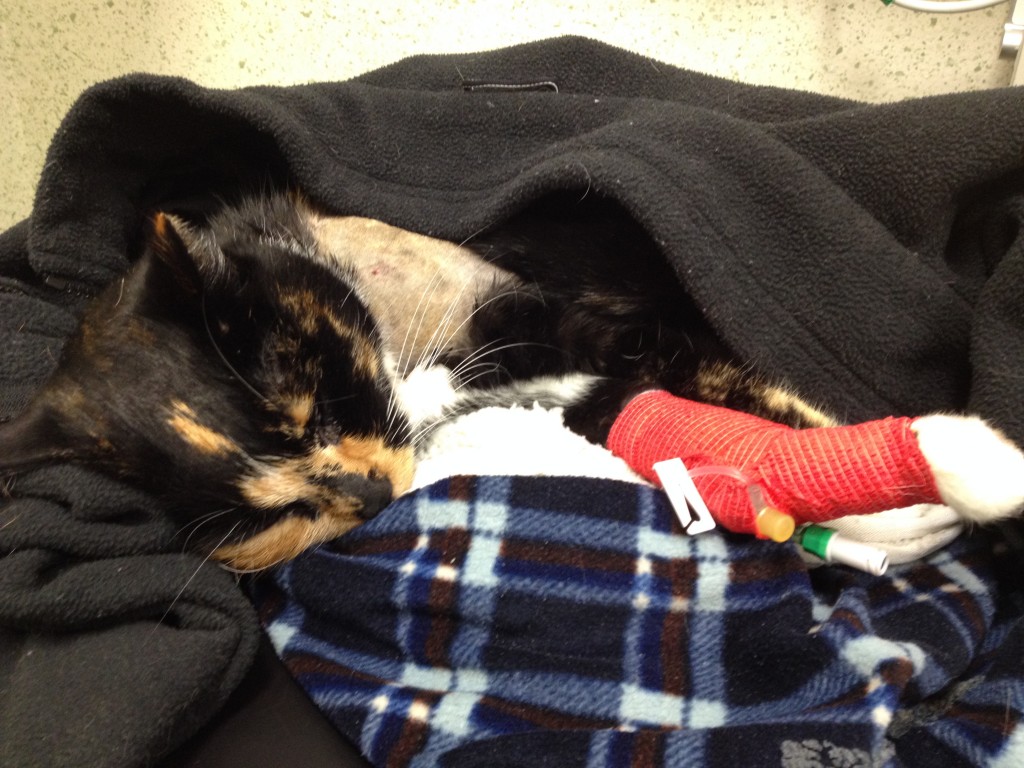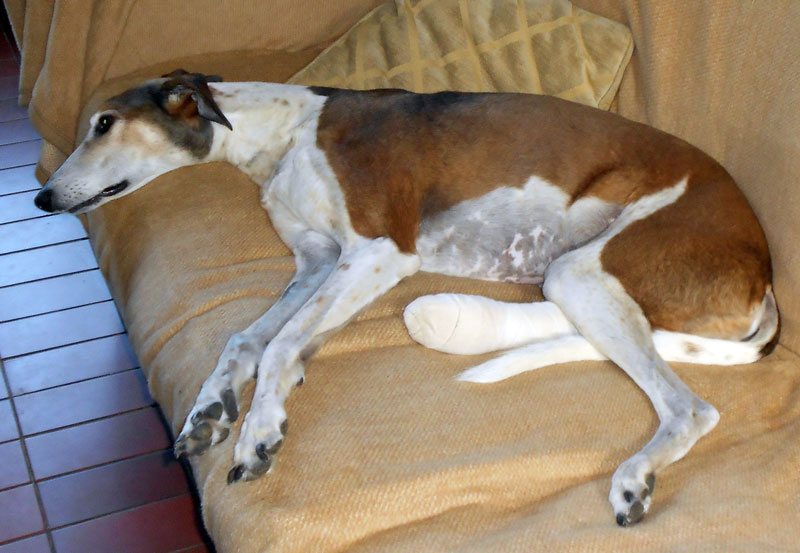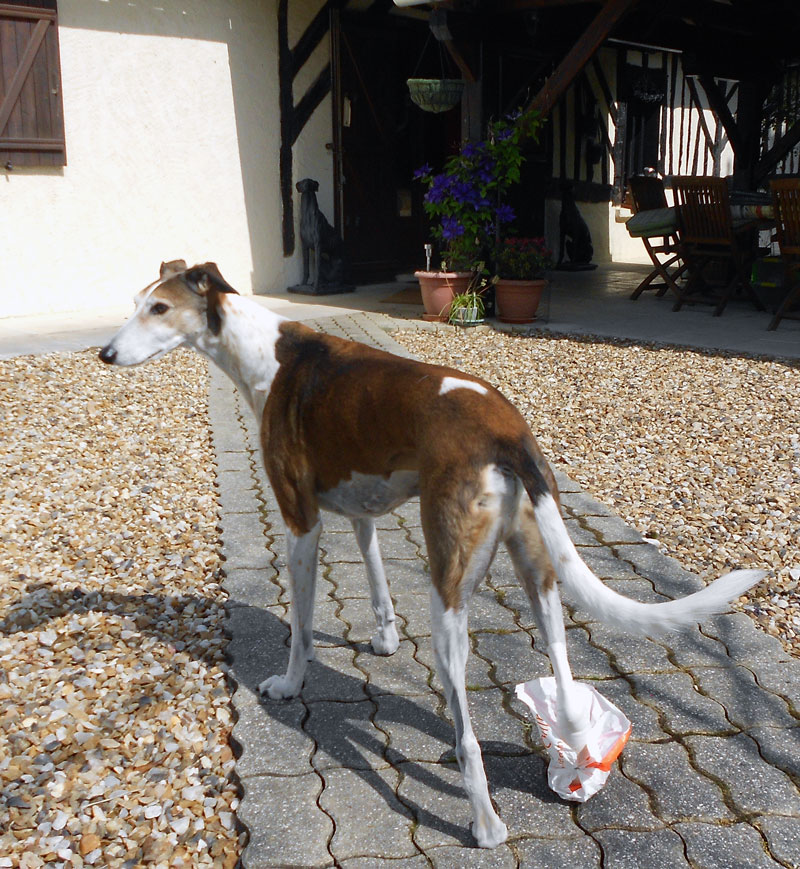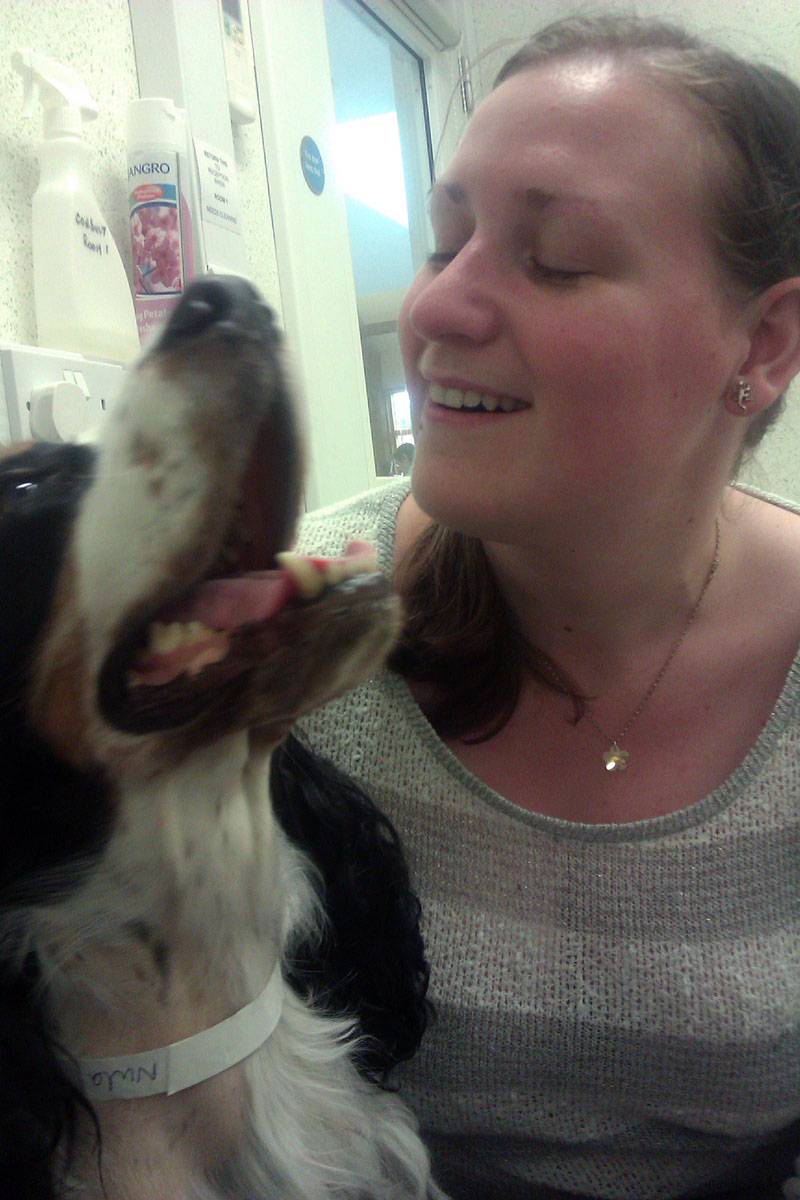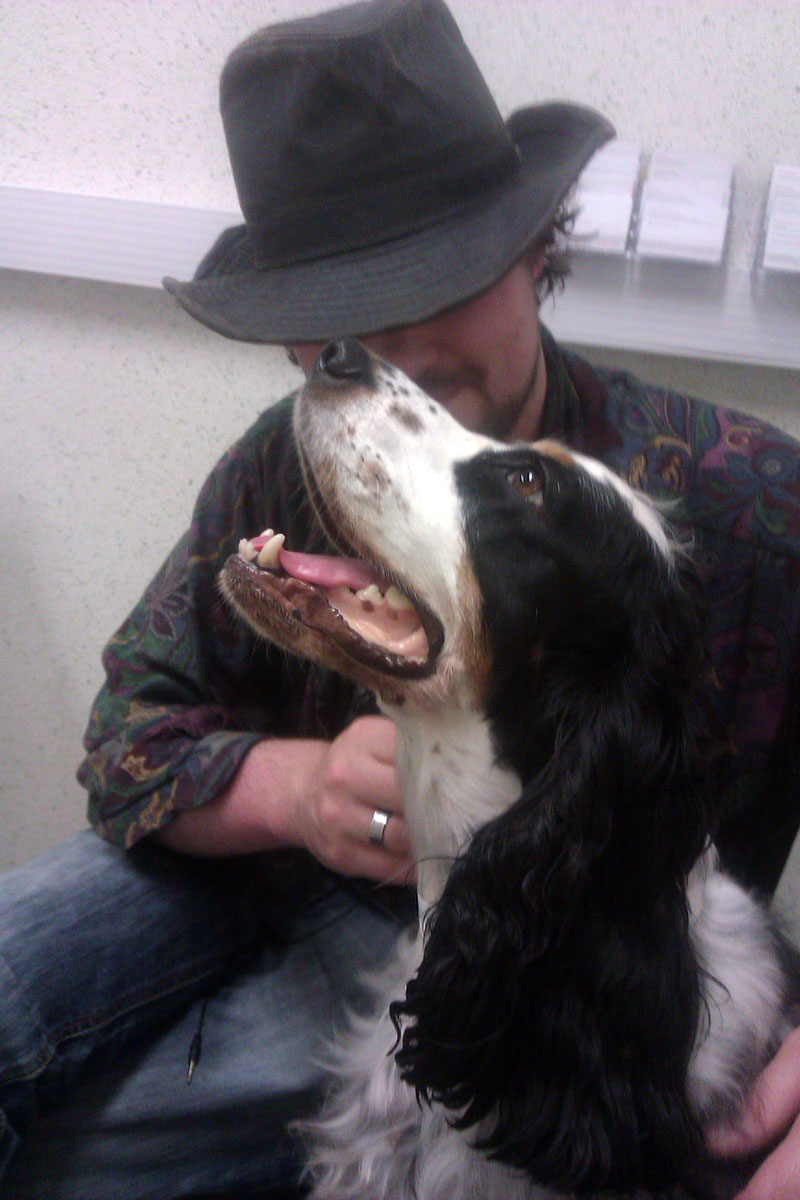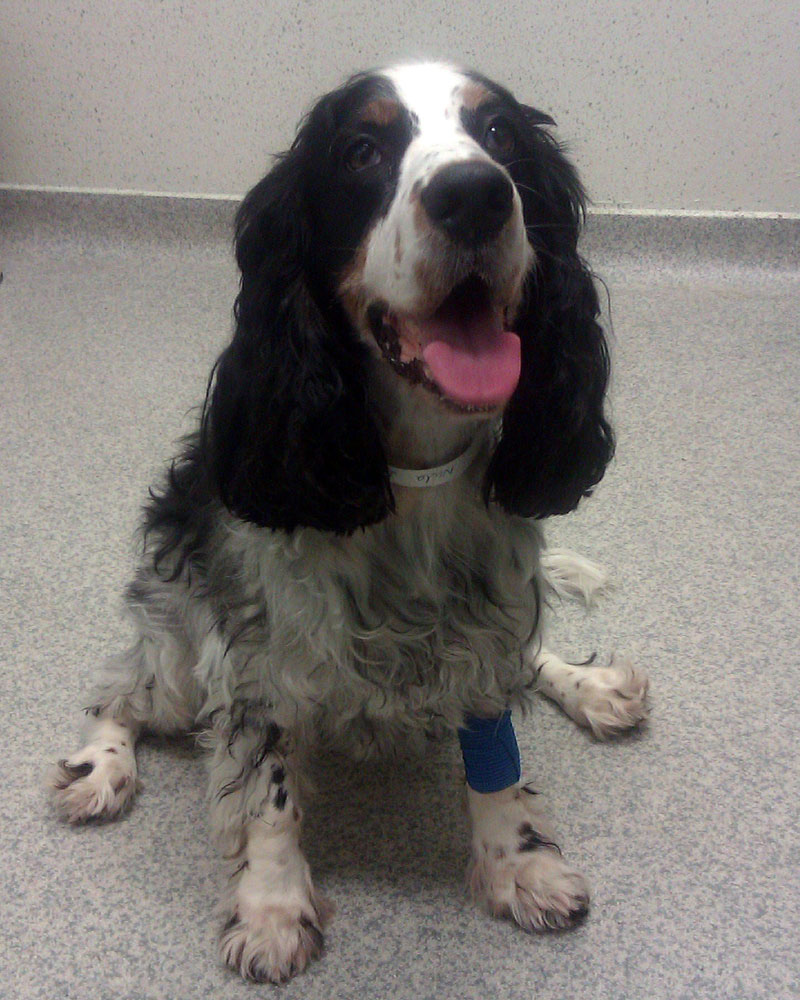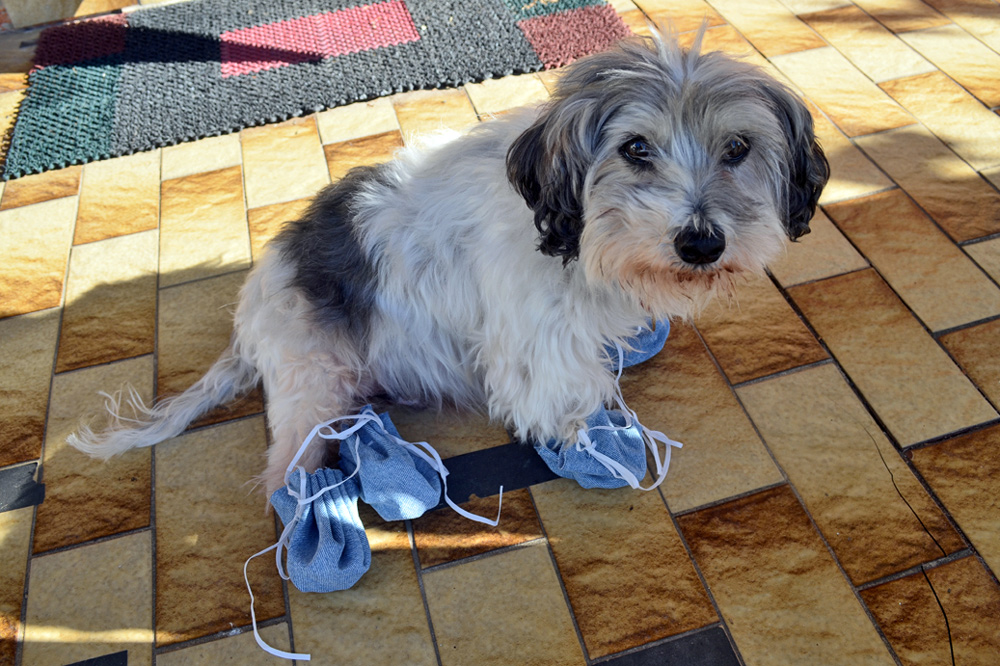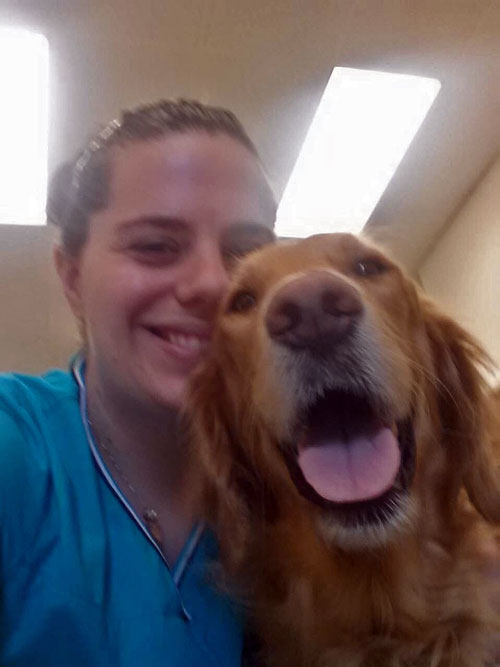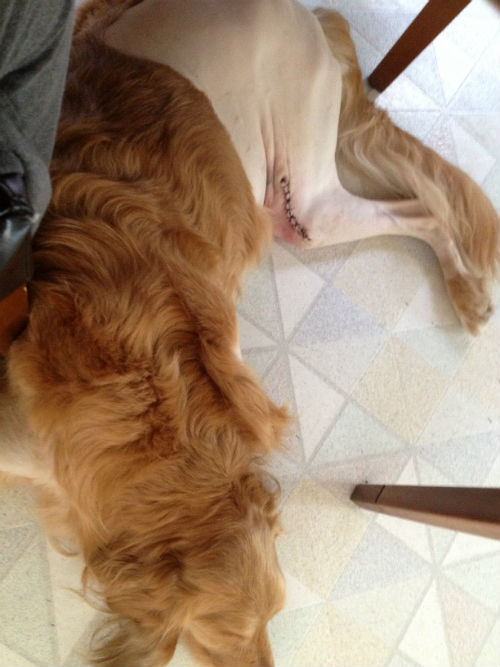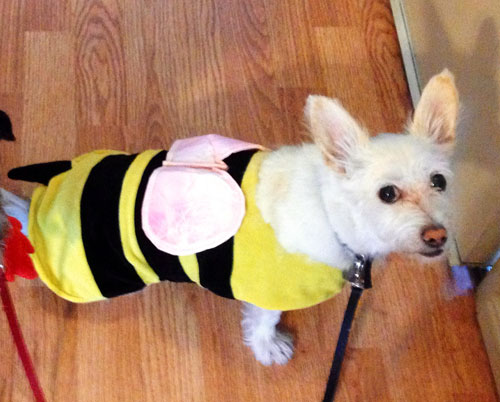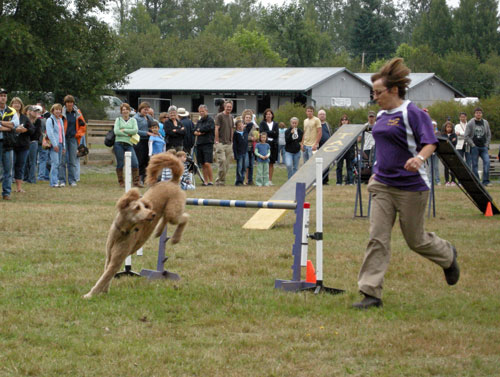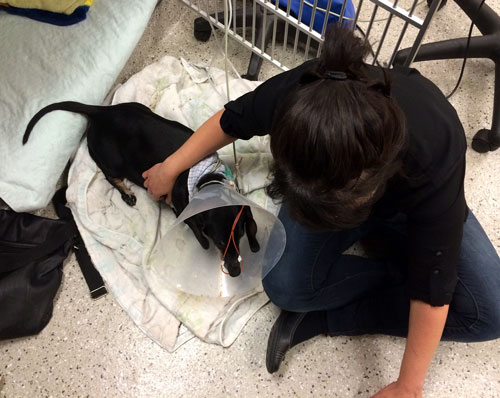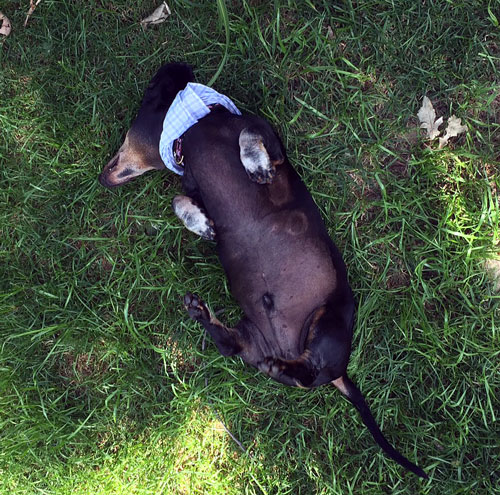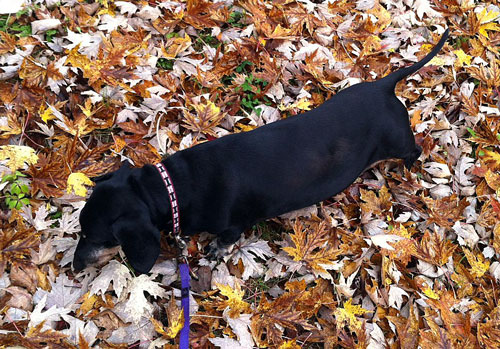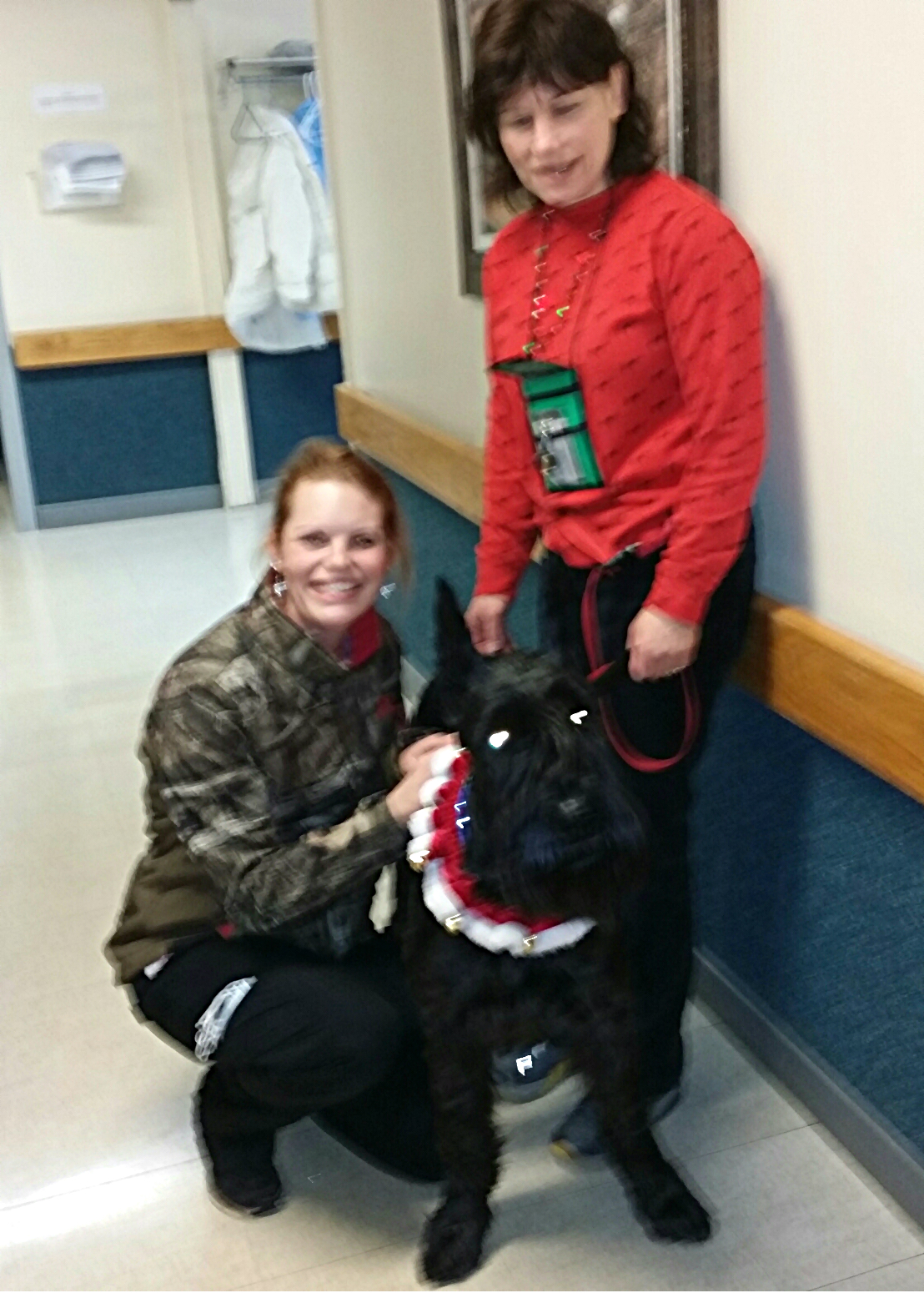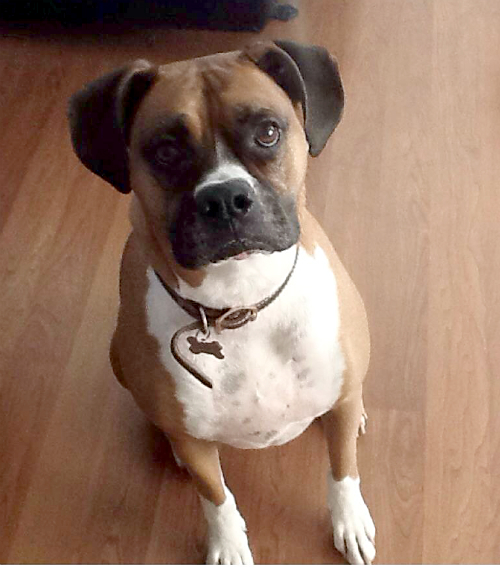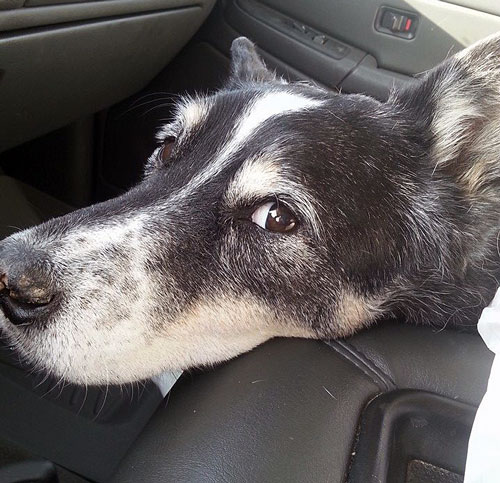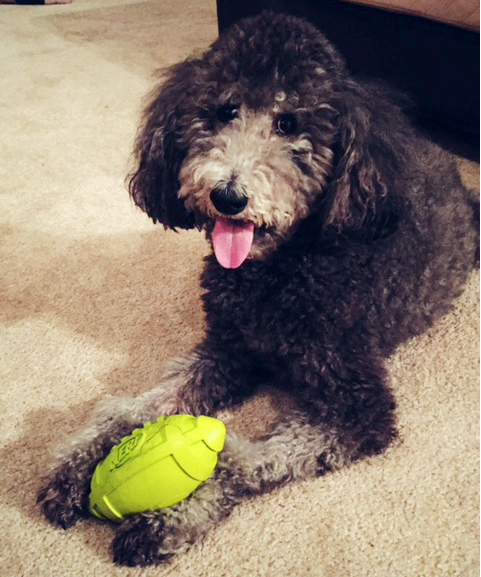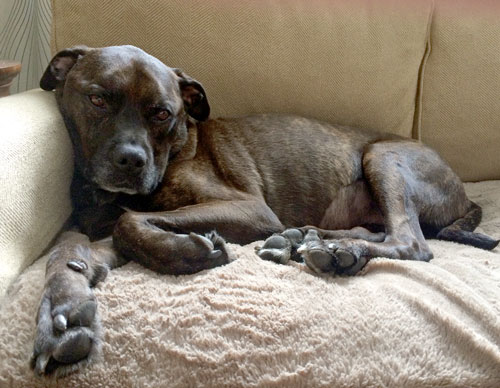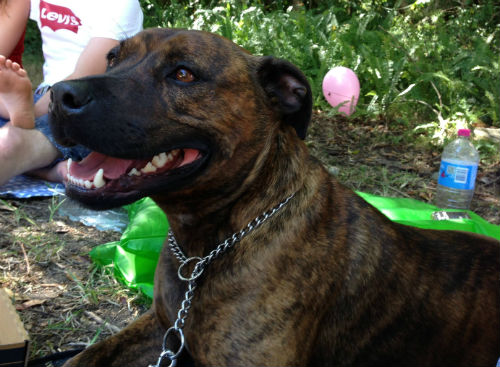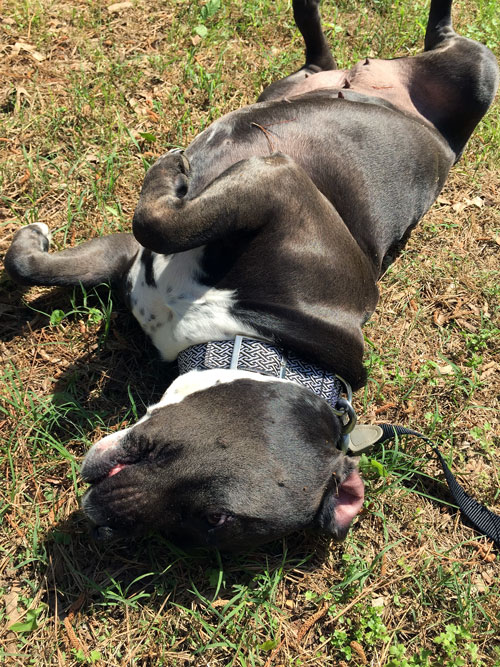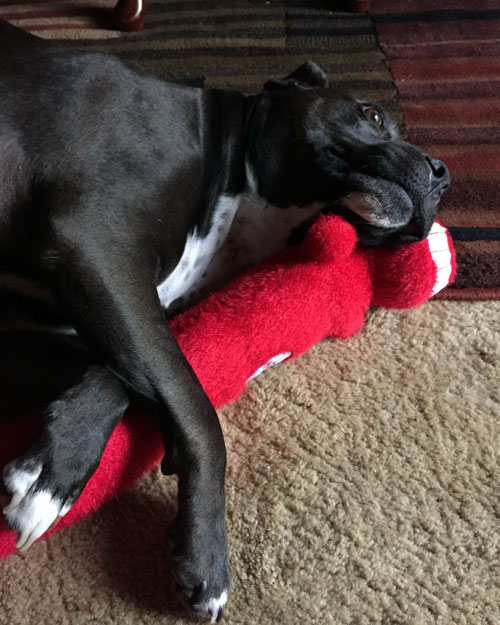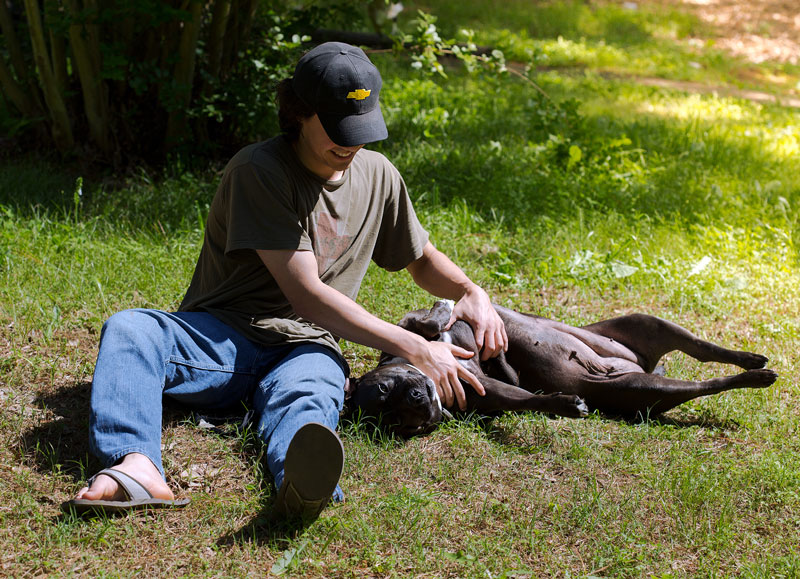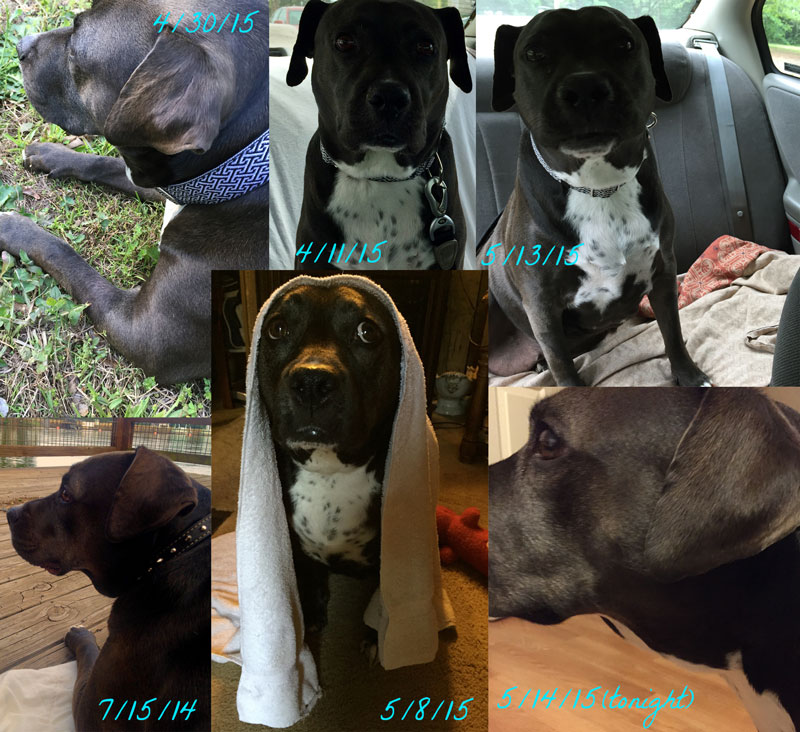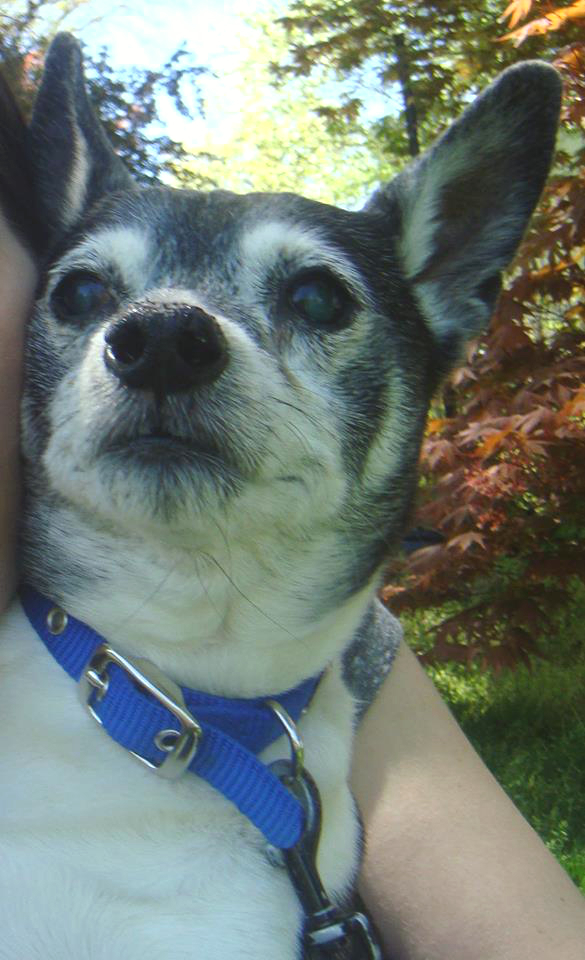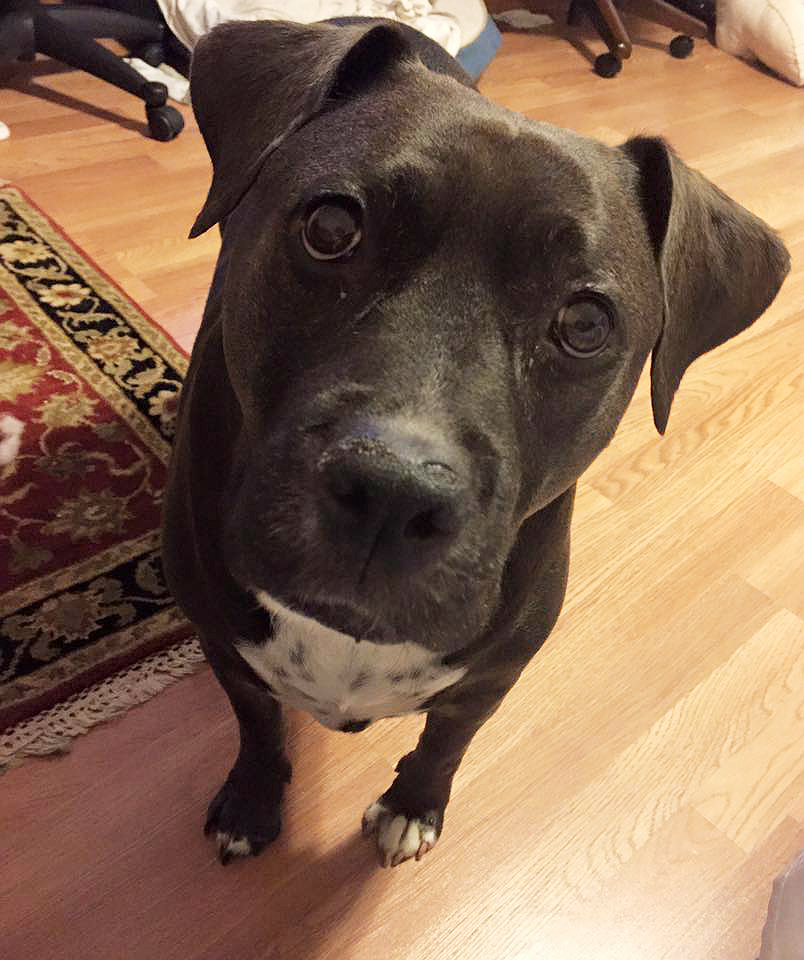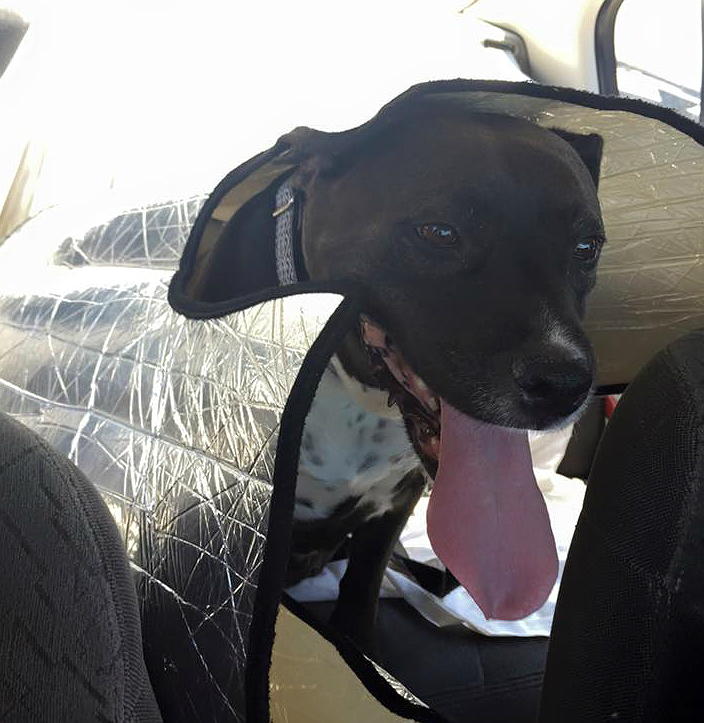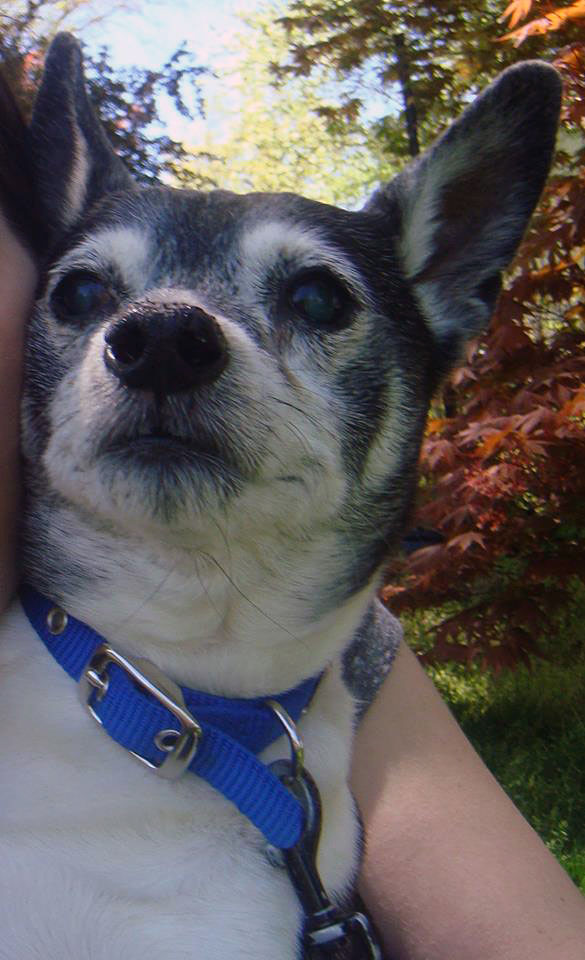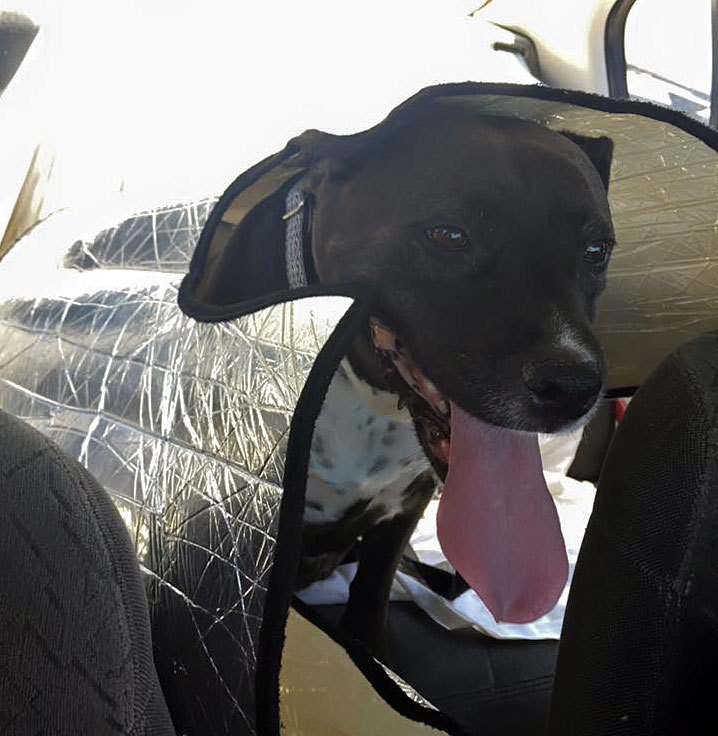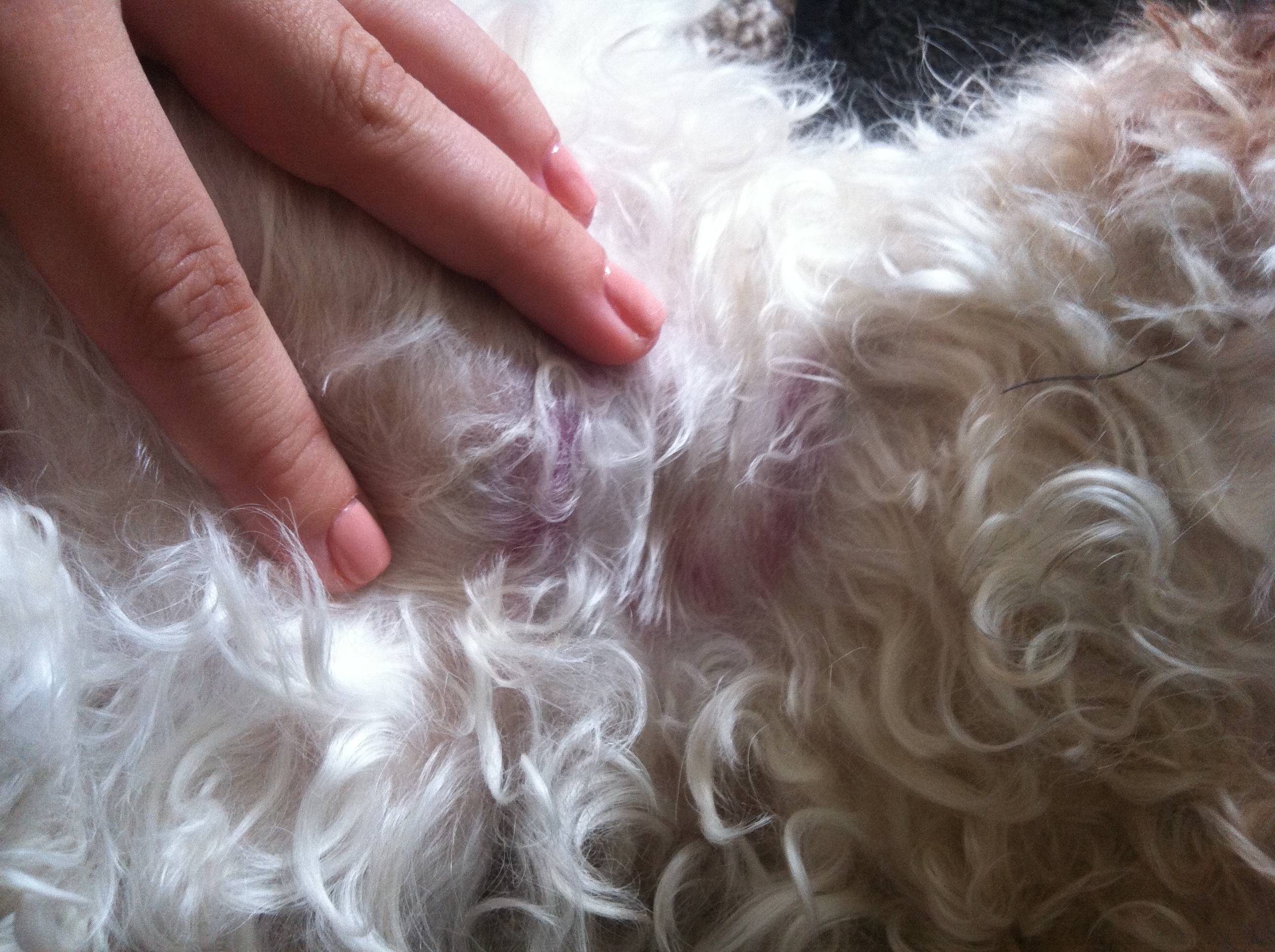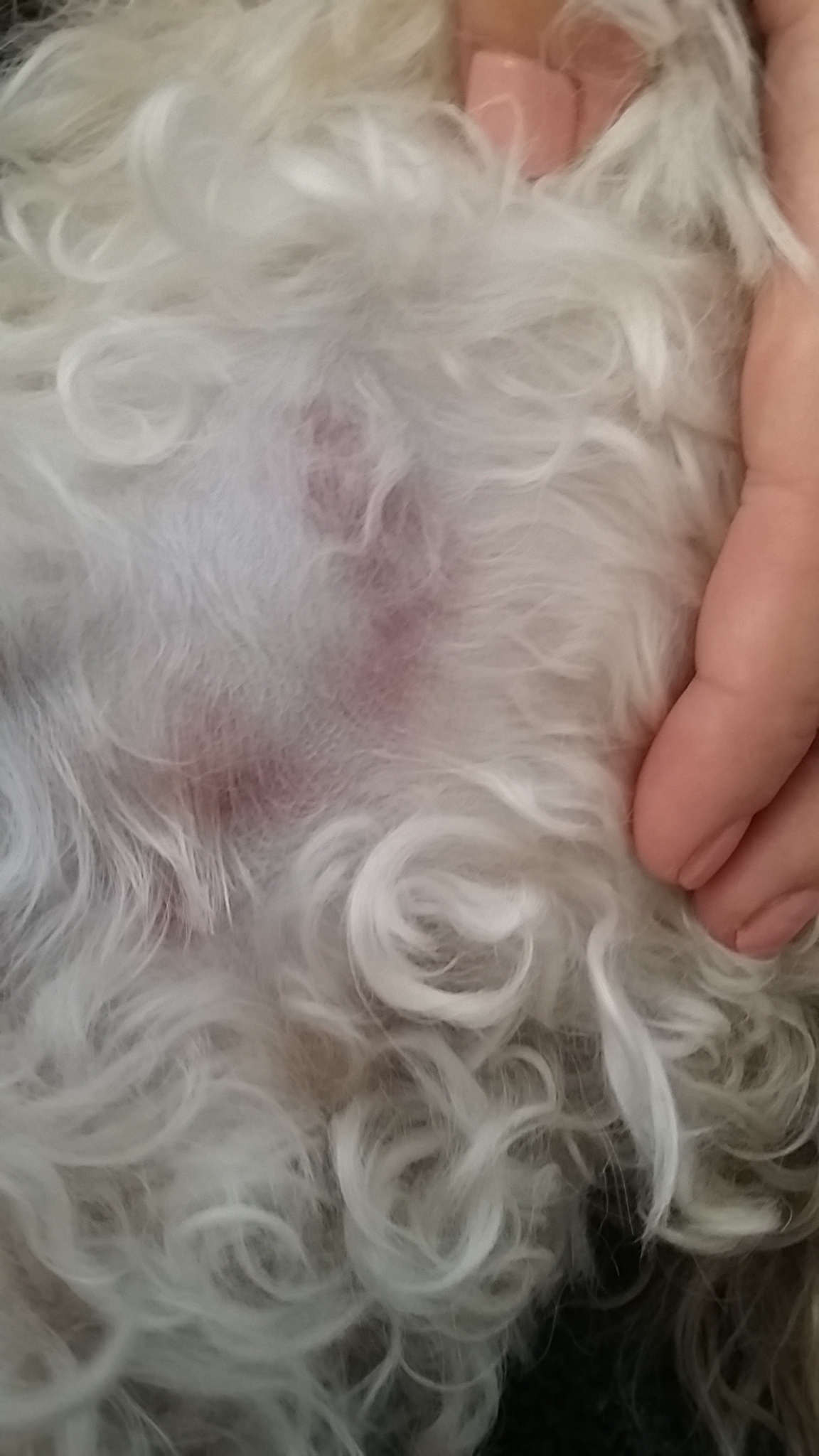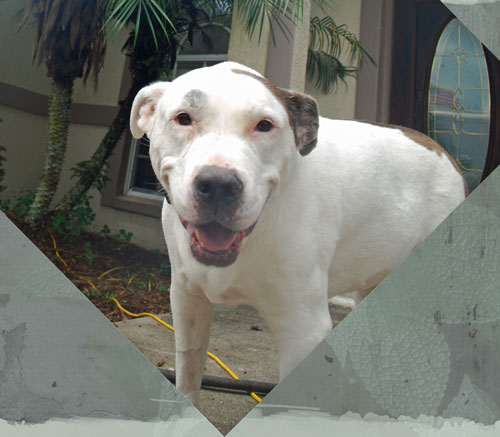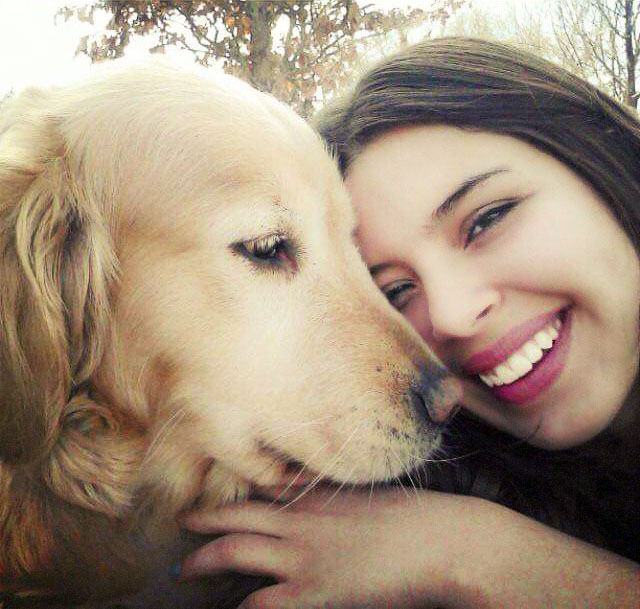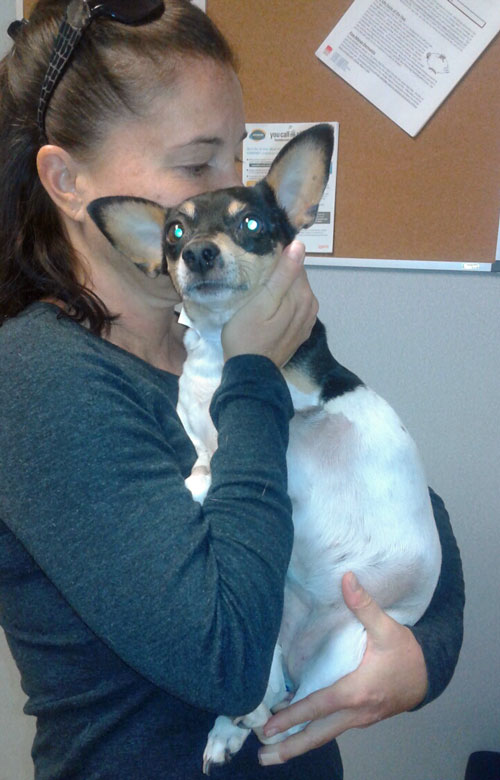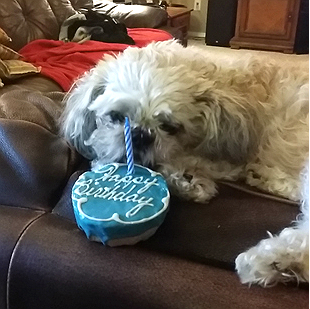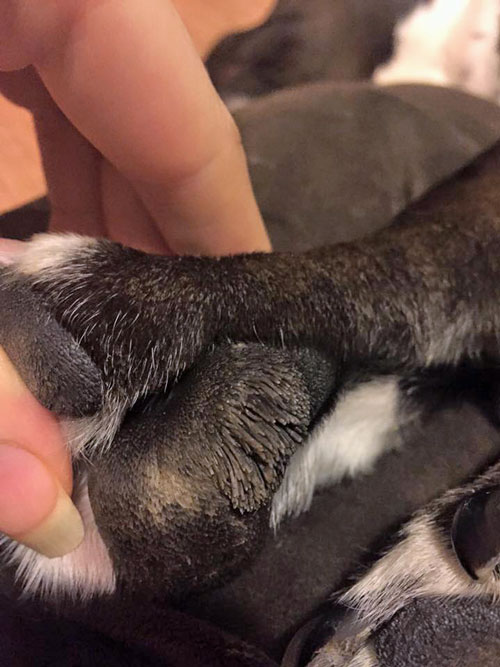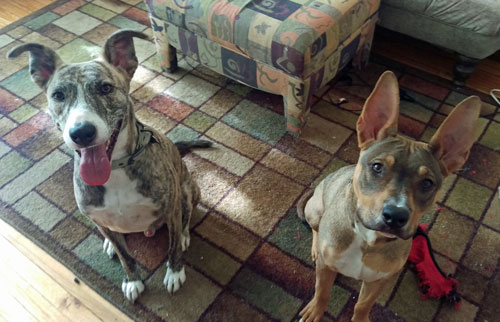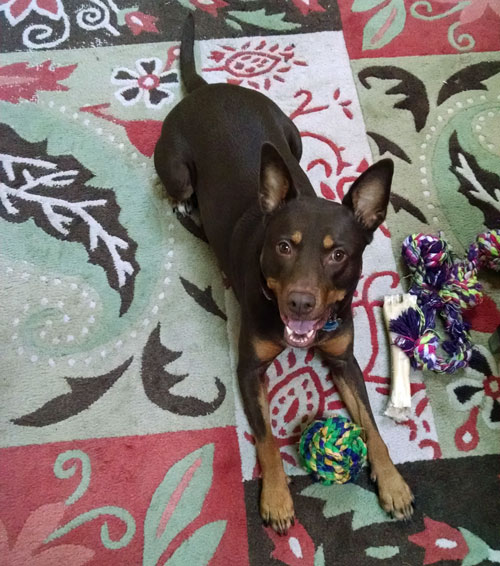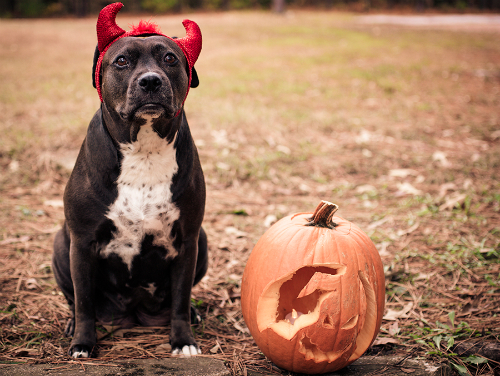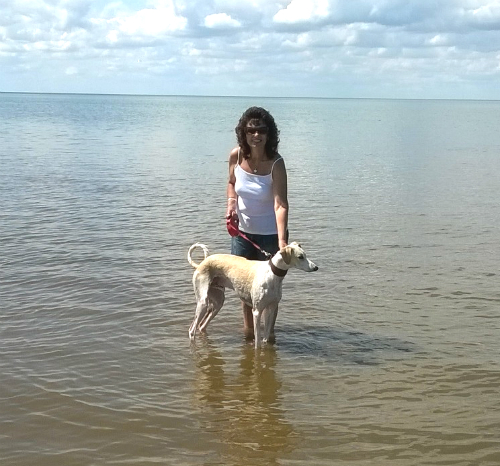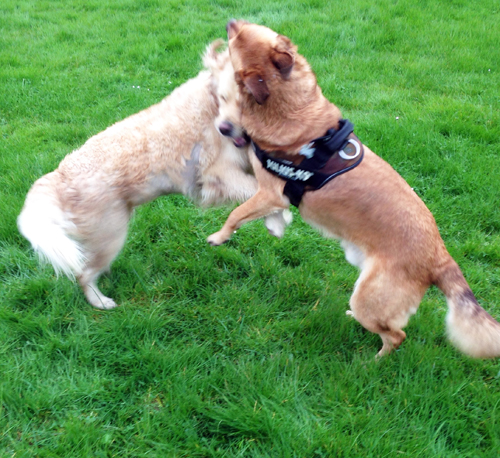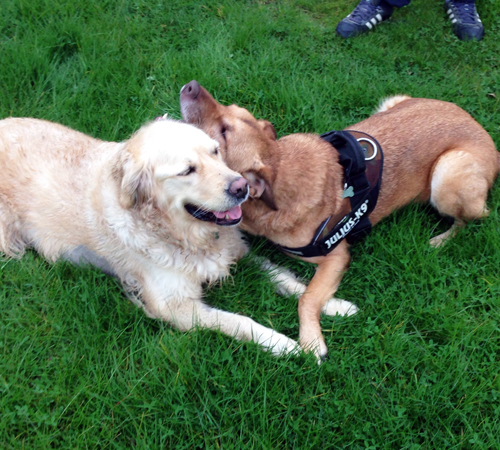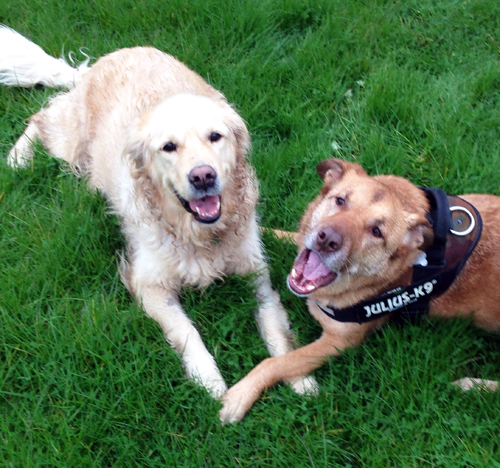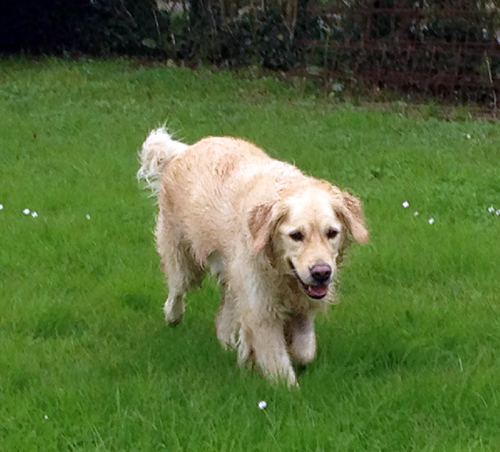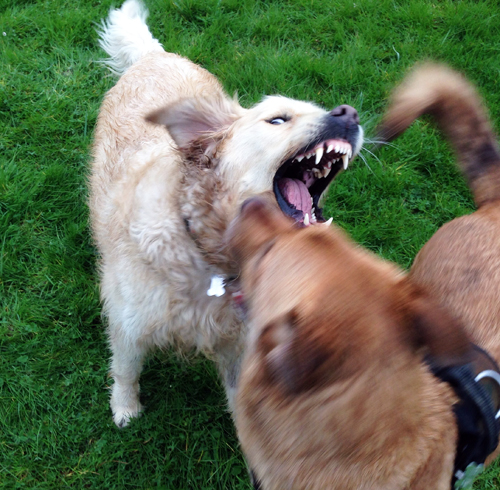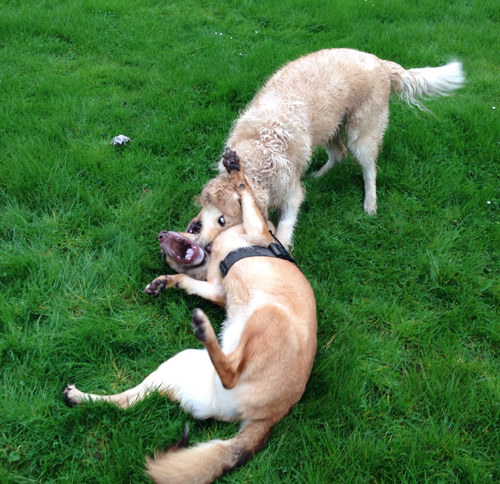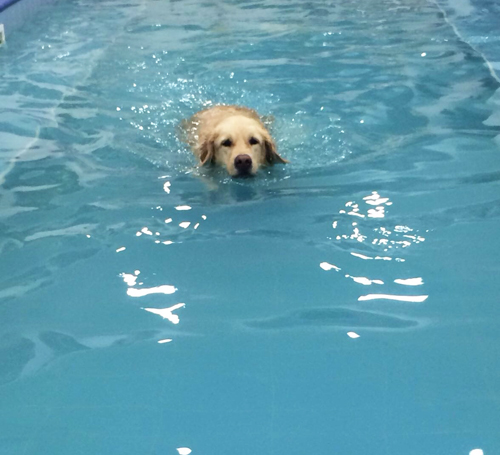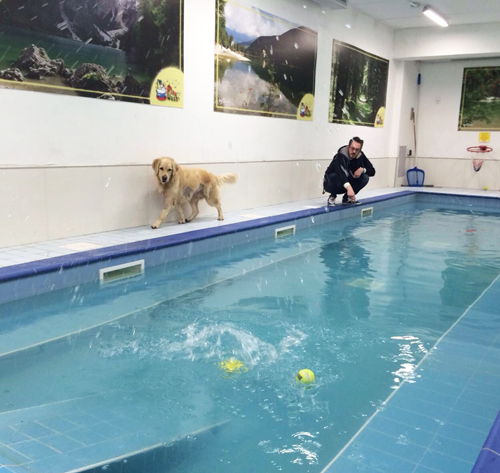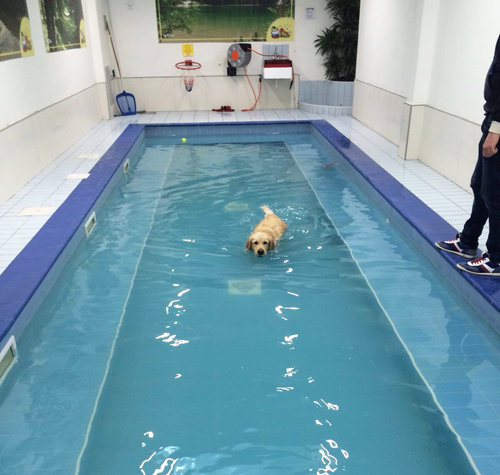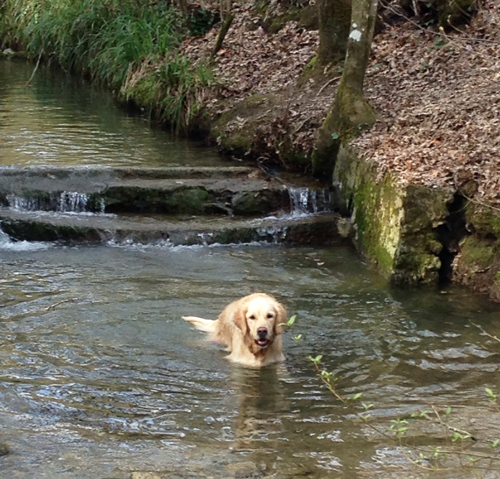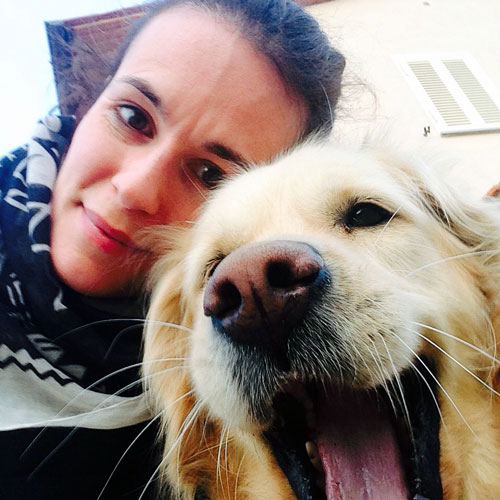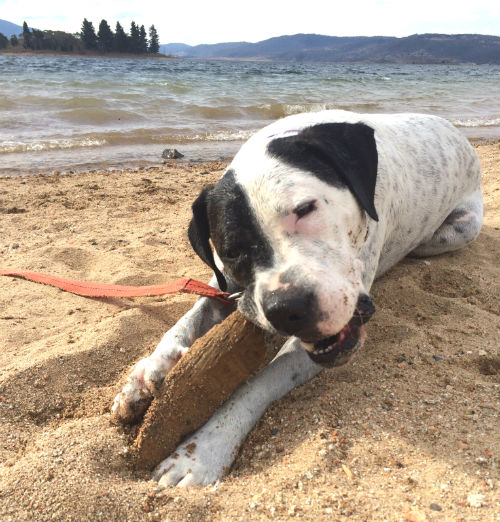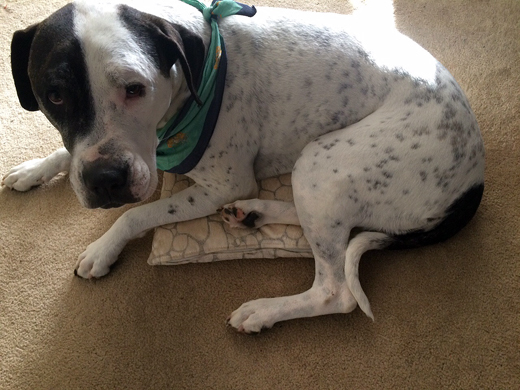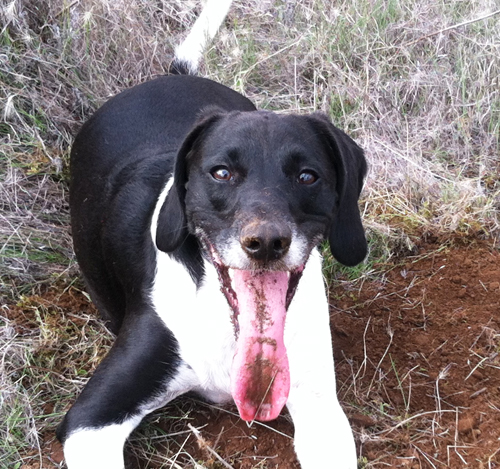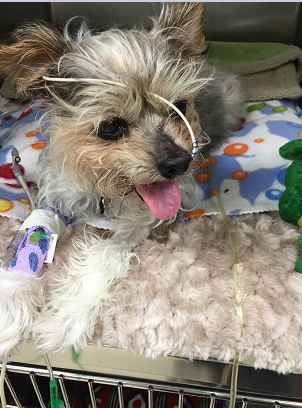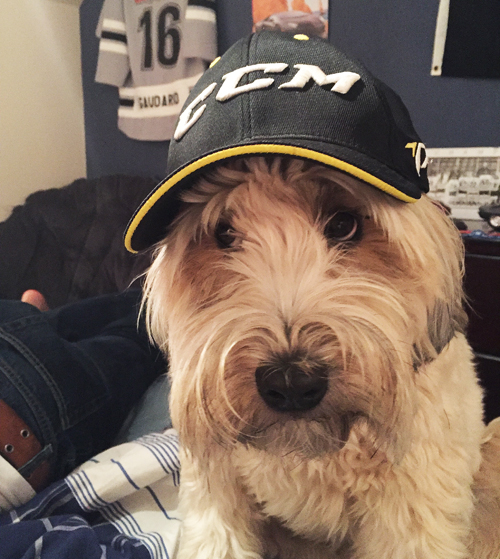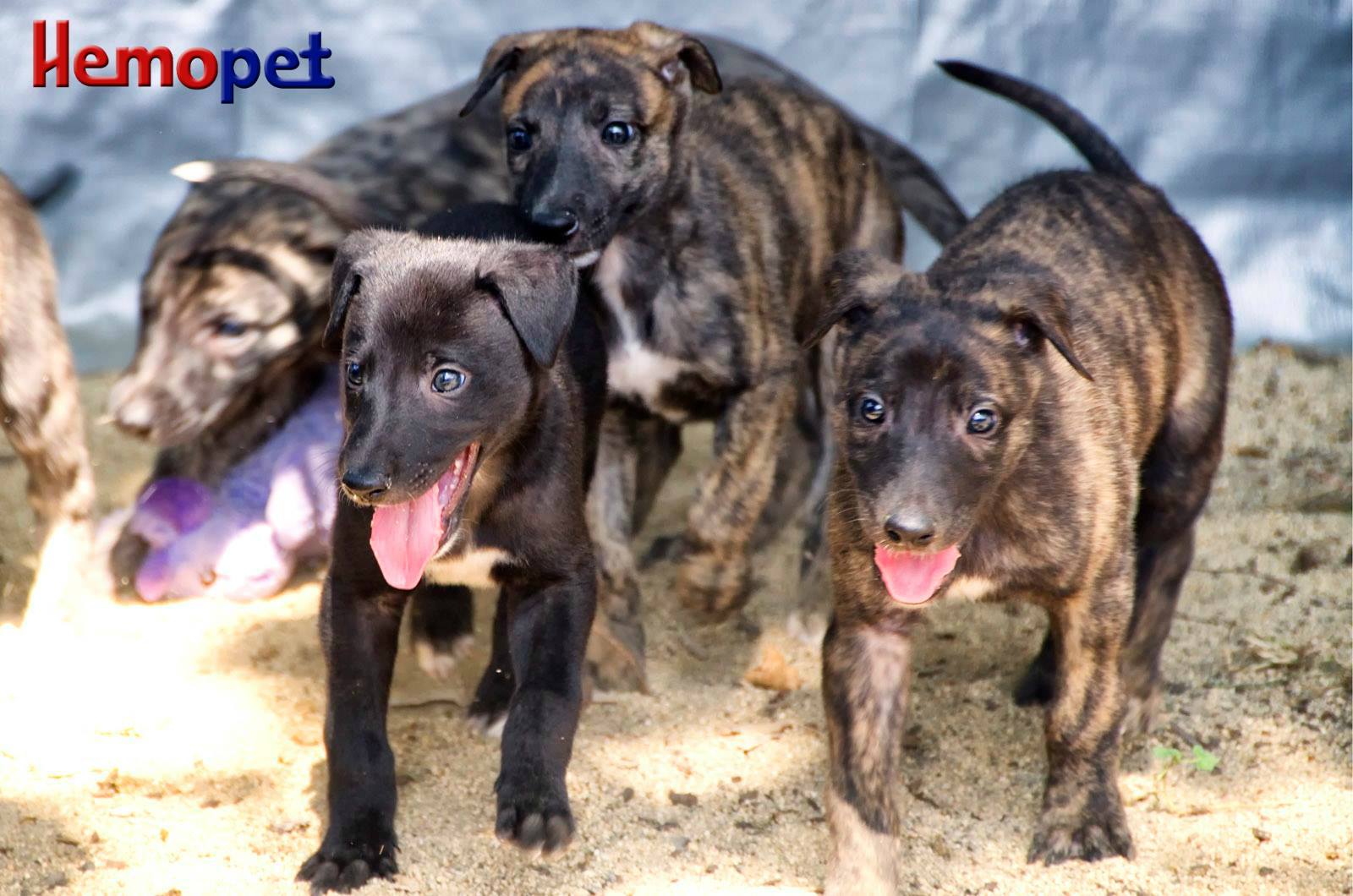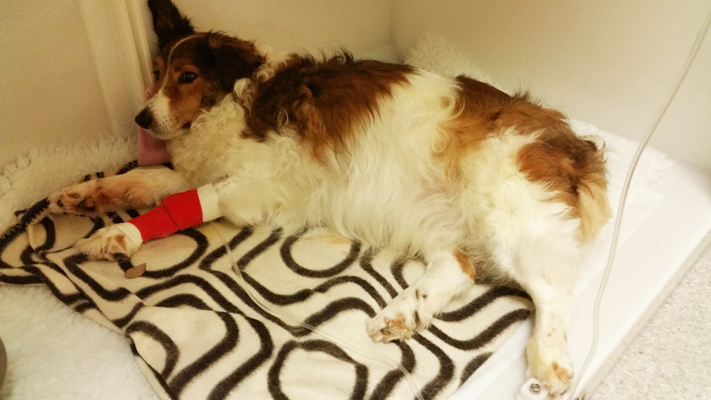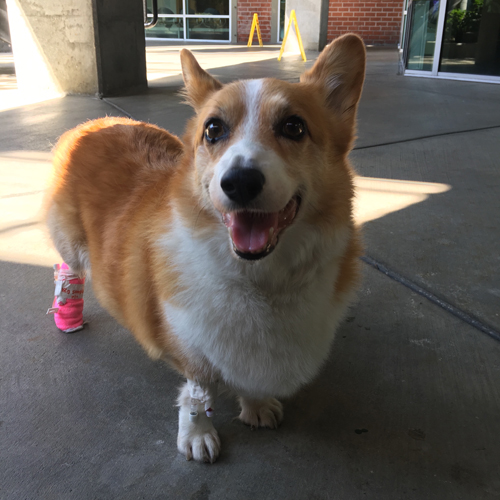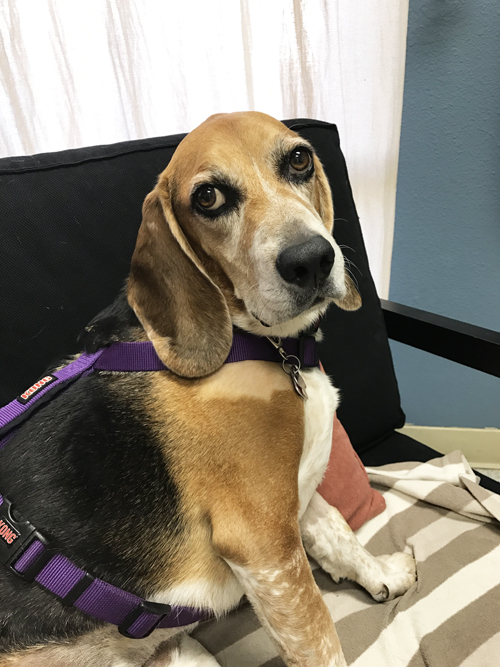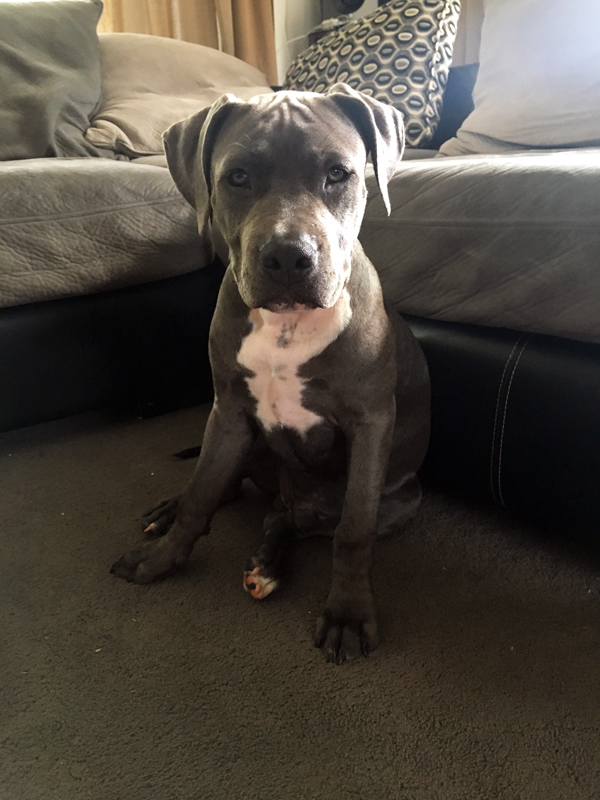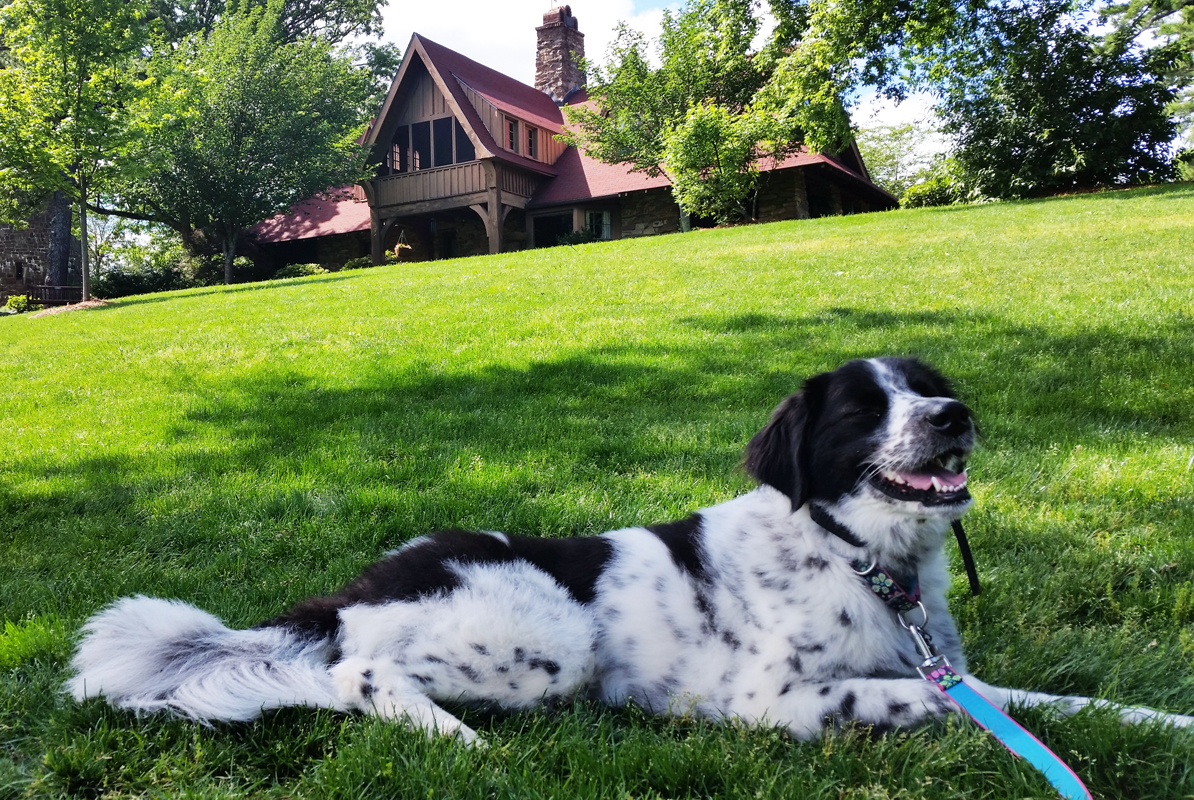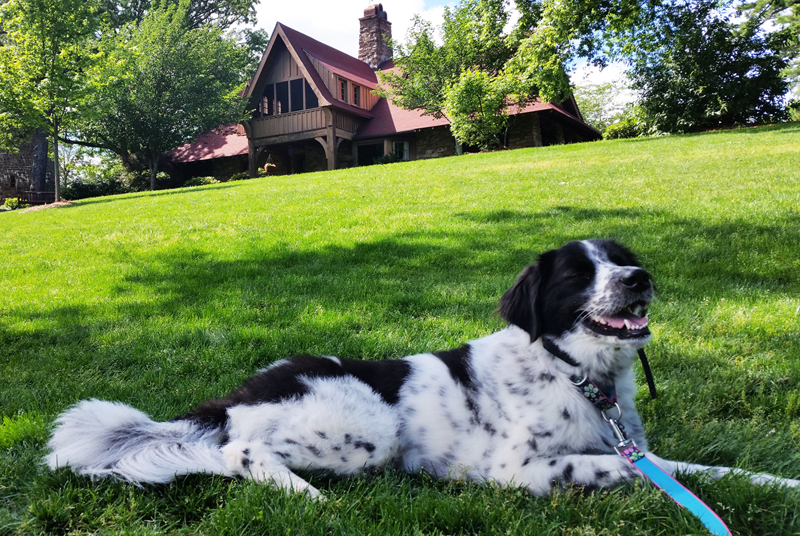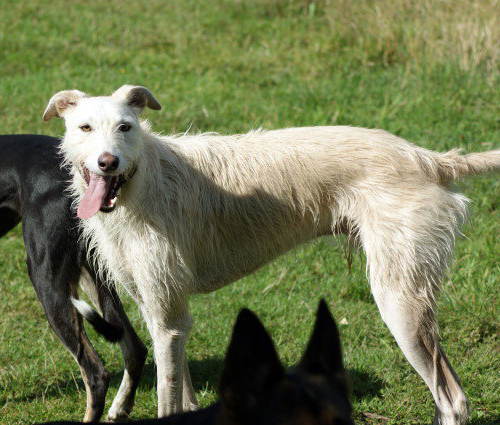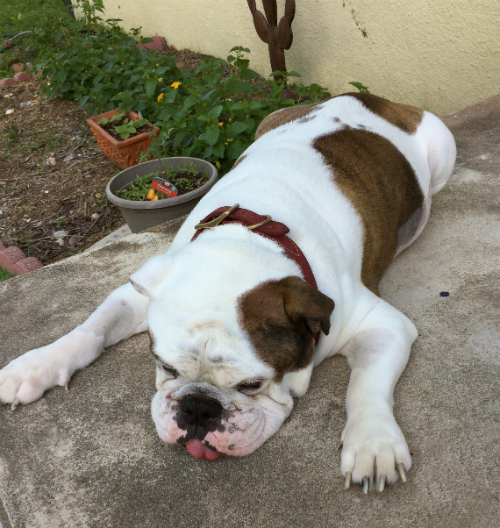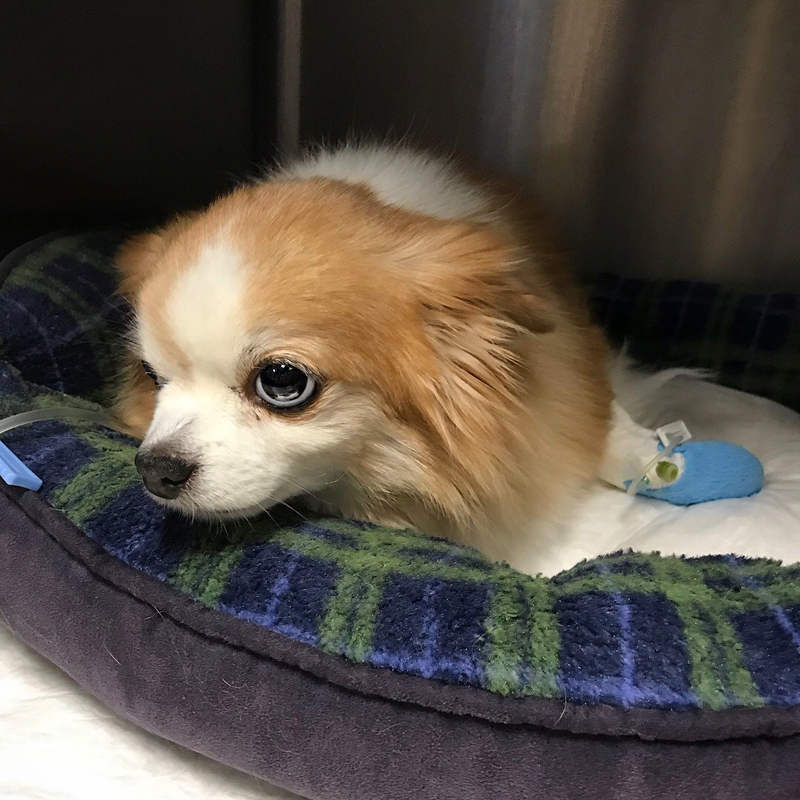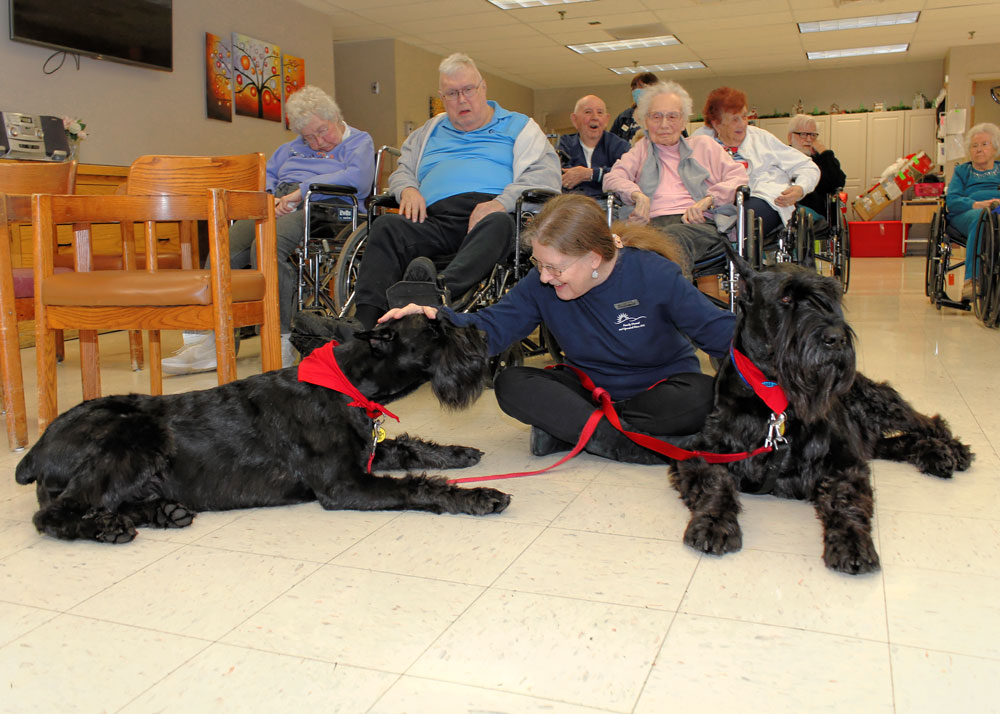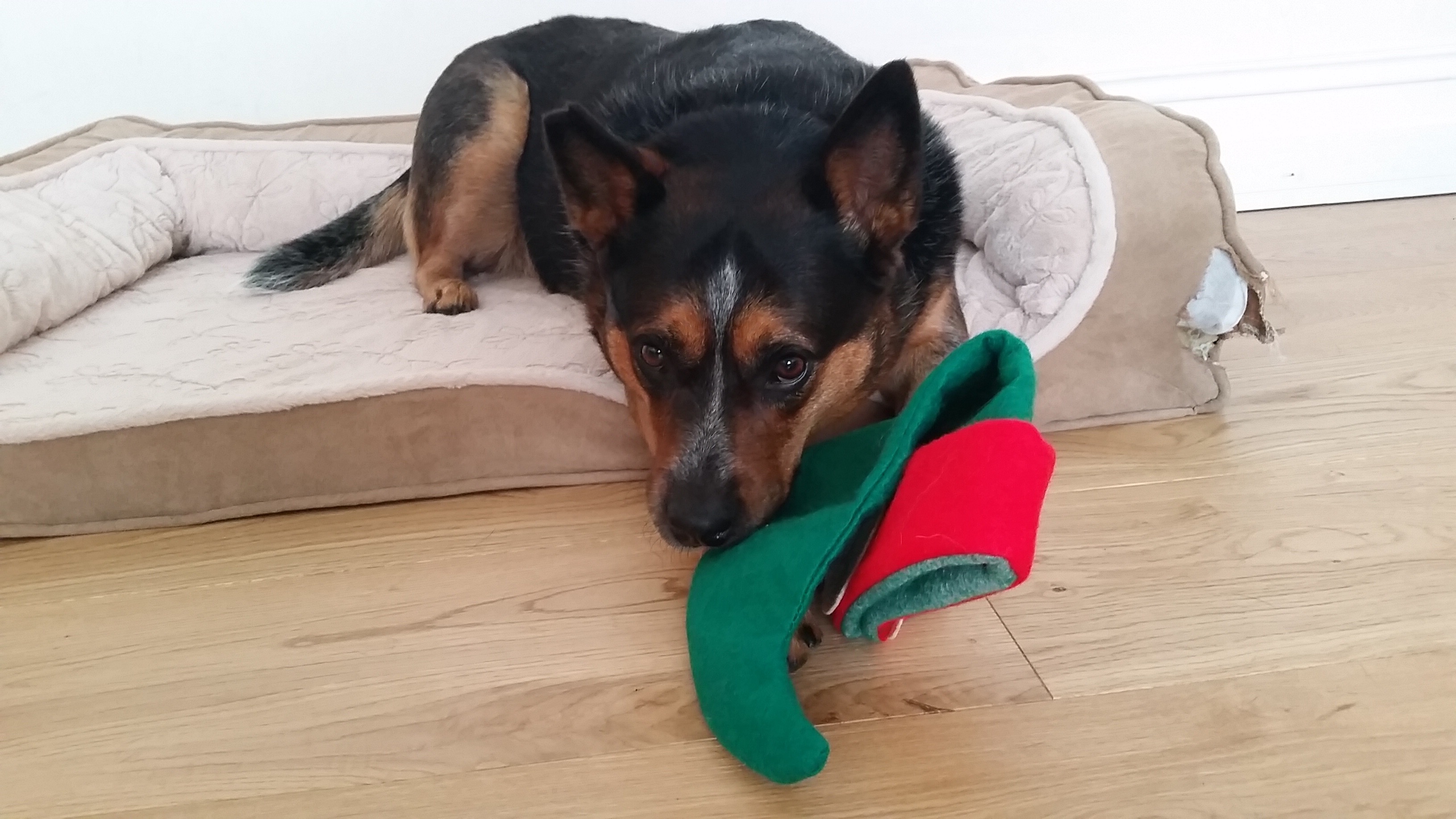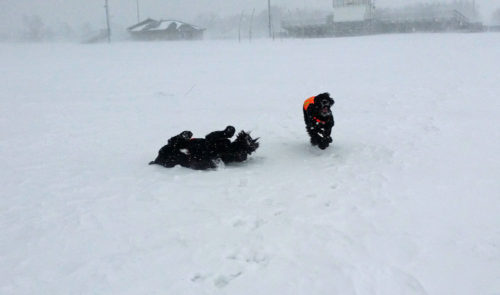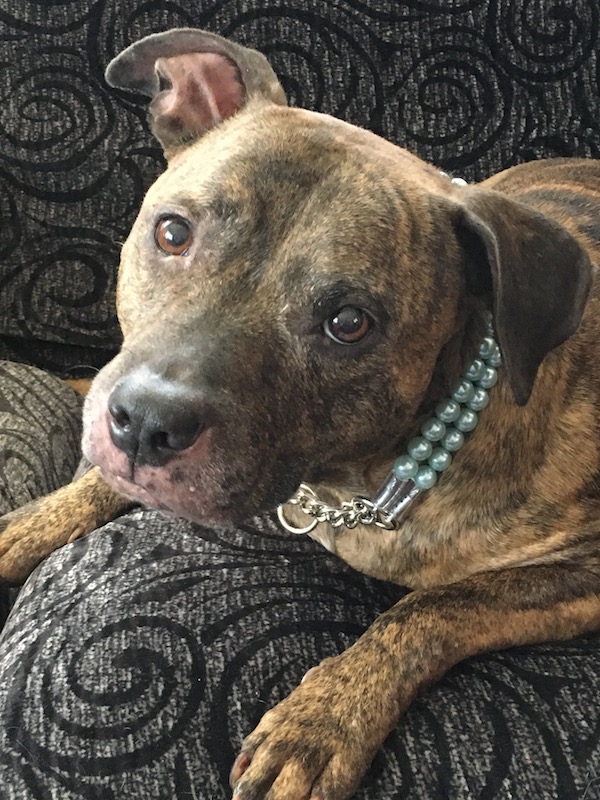Forum Replies Created
Terri,
Red blood seen in stool is due to an irritation in the colon. Bleeding higher up in the digestive tract will show up as black in stool.
Colitis is always a concern in dogs being treated with many drugs. You should explain what you have seen to the vet. We don’t want to see watery bloody diarrhea.
I can suggest that you provide a bland diet, preferably home made, and include a few teaspoons of plain pumpkin in meals. That will provide some bulk. We don’t want any roughage to irritate the colon. Other additions could be plain yogurt, scrambled eggs. Mixed together it’s like pumpkin custard.
The vet may prescribe metronidazole for this and that’s fine, it should resolve it quickly.
My best Patrice
Marie,
I am sorry to read about Bibi.
This is a bit different than what we usually see in dogs with IMHA. Their immune system is attacking red blood cells.
If I understand correctly she is experiencing bleeding due to colitis and this is leading to anemia.
While transfusions are not benign treatments, they are very beneficial for supporting and maintaining homeostasis of the body. When a human or dog has anemia, whatever the cause, it affects the entire body. The body’s cells don’t receive enough oxygen and functionally begin failng. For a small dog, for instance, they can develop a heart murmer. Also low PCV HCT leads to hypovolemia, low blood pressure, risks of clotting. They don’t feel good.
So, medically, a transfusion can help maintain stability, and make us feel better.
There is no one single criteria for when a transfusion is necessary. The medical community calls this a transfusion trigger. Dr’s evaluate a number of things before determining if one is necessary or just a good idea.
After evaluating all the lab work, the vet evaluates the patient. Are they really suffering because of low O2 to the body? Have they become weak and unwilling or unable to eat, can no longer stand to potty, are disinterested in visits from you or her caregivers?
I’ve seen dogs on this forum who could not tolerate a PCV HCT of 20%. I’ve seen dogs at 13% that were spunky and happy to see family. First dog needs a transfusion, second dog may not.
Serious colitis can be a medical emergency. It can quickly decondition a dog, leaving them febile. A transfusion can help with other things than just replace red blood cells. It can provide many other cellular elements that help.
So, I’m not sure of all the details about Bibi, what her lab work ups look like, what diagnostics have been done. If the attending vet is urging you to do this ask them why they feel this way. You don’t need to feel like this might seem a combative to them. They are professionals and should respond to you positively.
Another transfusion has some risks. Your dog needs to be typed and matched. Transfusions should be performed slowly and carefully to avoid transfusion reactions. Ask if the staff doing this does it routinely and understands the risks. Weekend staff should be as capable as regular weekday staff.
The cost can be normal or high, depending on whether it’s considered an emergency or routine. Find out first.
I have no doubt this will make Bibi feel better. Will it treat the other problems, probably not directly. I suspect they have her on prednisone in order to quiet down the colitis. Ask what other treatments they are considering for that.
Do you have more questions?
My best Patrice
Kerrie,
You have had a very frightening few days and you still have the fortitude to fully understand most of what is happening and plan out carefully what you are going to do. This attitude is so important in the coming days. Way to go Mom!
Ok, let’s jump right to the diagnosis of Babesiosis. Your vets were very smart to test for tick diseases in the early diagnosis stage.
IMHA immune mediated hemolytic anemia, is destruction by the immune system of red blood cells (hemolysis) that is MEDIATED by some outside factor, a parasite. The mediator in this case is the babesiosis. And it is treatable. How she contracted it is still up in the air, it could be from a tick but it can also be contracted from other dog’s bites. It is also possible that she has been a carrier and is finally expressing the disease fully. I have several resources for you to read about this disease on this website.
See this webpage:
https://www.secondchanceaihadogs.com/parasite-resources
Near the bottom you see a picture of a dog’s yellow gums and another of a microscopic picture of cells. Both articles discuss babesiosis. Open them both and then you can click on the upper right arrows to open them in a tab so you can save and print them.
https://www.secondchanceaihadogs.com/parasite-resources
A third study is also available, that your vet might want to read. Go this page:
https://www.secondchanceaihadogs.com/canine-disease-resources
Click on Case Report, An Unusual Case of Babesiosis.
Babesiosis is a tick disease that is a bit different than other tick diseases. It can’t be cured by treatment only managed. Many dogs are able to fight it successfully and simply remain carriers the rest of their lives. One breed in particular is known for their carry status, Pit Bull Terriers. Babesiosis is endemic in this breed plus Greyhounds and they are both carriers. You mention your Beagle is a mix, is it possible that the parentage might include Pit Bull Terriers?
Babesiosis is fought almost exclusively in the spleen. The spleen has multiple duties, first to store blood, second to remove old worn out red blood cells and either eliminate or re-purpose the parts, third is the important immune system functions it provides, one of which is to search out RBC that contains parasites and then effectively damage and destroy them (and in the process destroy the RBC as well.) So right now your dog’s spleen is actively fighting this disease. That is a very important thing to keep in mind.
I’ve been on a tick list, Tick-L, for many years, moderated by a scientist, and we have discussed Babesiosis at length. One of the conundrums of treating dogs with Babesiosis is the use of high dose immuno-suppressive drugs, like prednisone and dexamethasone. We sure do want the immune system to stop destroying RBC so suppressing it seems like the best thing to do. But we forget that the spleen is also working right now, very hard, to destroy this tick disease. So it’s fine edge sword that we use predisone but also need that spleen to do their job.
One of the two papers I have linked you to was written by Protatek Reference Lab, who are the largest lab to test for parasitic diseases in the country. That is all they do and they are infamous. So, you will read this, and the first treatment they mention is chemotherapy. This can reduce or even eliminate symptoms, though the dog remains a carrier. This depends on whether the causative strain is Babesia canis, which are “more readily cleared than those caused by B. gibsoni.”
The next comment they make is “Doxycycline and Clindamycin are affordable, generally well tolerated treatment options for dogs with low to moderate titers against B. canis and showing mild clinical signs of Babesiosis. However, these drugs will not clear the infection.” I suspect your doctor has already added doxy, though you didn’t mention the drug you said an additional antibiotic. I’m guessing your lab may have found high titers so this may not be as successful as you wish.
Finally Protatek mentions “In the US the “big gun” treatment is Imidocarb Dipropionate ( Immizol). The drug is usually administered in 2 injections (given 2 weeks apart). The drug is most effective in clearing infections caused by B. canis. Although the drug is beneficial in treating clinical disease caused by B. gibsoni, it is less effective in clearing the infection caused by this agent.”
So the first thing you need to find out is which strain your dog is infected with, B. canis or B. gibsoni. I am sure your lab report has identified this. From there you and your vet can conference about these three treatment options.
Immizol is very expensive and must be ordered in a quantity sufficient to treat the dog twice. But Protatek comments “In dogs that are exhibiting low antibody titers and are asymptomatic, this treatment is not worth the risks and side effects.” We saw some miraculous cures with this drug. There are some side effects to the administration, but they carefully note in this paper to the veterinarian how to completely eliminate this during administration.
The second paper is a review written by veterinarians and is very complete in all details. You should read this carefully and try to understand as much as possible. Then sit down with the vet and go over each section to see what has been accomplished, check them off, and what still needs to be reviewed.
Within this review there is a caution about the use of prednisone, which I mentioned above. We had several owners on Tick-L who were treating very sick dogs with Babesiosis. The question we hammered out for several days was, should this dog be on prednisone??? If the spleen is doing all this work with their immune system elements, is it counterproductive to be suppressing that part of the immune system? So in the end we felt it might be beneficial to reduce the dose of prednisone and provide additional treatments (such as mentioned in this review) as soon as possible.
Maintaining homeostasis is a critical part of treatments for dogs fighting babesiosis. This means making sure that they are physiologically stable. Blood transfusions mean a boost in more things than just more red blood cells. Whole red blood transfusions provides many other blood elements that are of great value and go a long way in making the patient stable. One problem dogs with anemia suffer is hypovolemia, low blood volume. This is helped with transfusions. A proper diet is also critical, easily digested foods are important. Even if the appetite isn’t there, syringing food into the mouth can be a way to keep the nutrition up.
I am also concerned, as your vets may also be, about low albumin. This is a protein made by the liver that is carried in the blood. It helps maintain the fluid inside the blood vessels. With tick diseases we sometimes see low albumin as one sign. This can lead to fluid leaking out of the blood vessels into areas like the abdomen and we want to avoid that.
So your conversation with your vet should be twofold, first address these reviews and studies and see if there are additional treatments and medication adjustments you can make right now.
Second it to address making sure your girl stays stable while she is being treated. We have noticed here on Second Chance for years, that if a dog is stable and healthier they can tolerate their treatments better.
Make no mistake your girl is working very hard, overtime, to get better. This is something we forget when we are caring for our sick dogs, they are fighting too. If she is showing the will to live then it is your choice to honor that if you wish. My vet told me many years ago with Chance, that we can’t put down humans who are having trouble making blood, we just have to keep helping them until they get better. I learned from that and fought for Chance. He survived and I do believe your girl can muster if she is given the correct treatments. She may never be free of this disease, and you will have to take some cautions in her life so she can survive, but I do believe it is worth it.
If you have any trouble reading the articles and need something explained, ask me. Any other questions you have for me?
my best patrice
Your vet can directly consult with Dr. Dodds. They can either call her, see this page,
https://www.hemopet.org/contact/
Or they can email her at info@hemopet.org
They are busy folks. If you want to email her make the subject line clear with your name, the dog name, the consultation number from the statement.
It’s good that she is at 36% HCT PCV Dr. Dodds is correct. This is only 2% from normal and is a good reason why the reticulocytes have decreased, they are no longer needed in such great numbers.
I am not sure what the number 18% is? Reticuloyctes are measured in percentages, but the values to indicate regenerative or normal would be from 1%, normal, to very high, 5.8% for example. Perhaps this is not 18% but 1.8%?
The other value for reticulocytes is the absolute number as compared to all the other blood elements. So normal would be 60,000 reticulocytes and highly regenerative would be upwards of 500,000.
If you would get copies of the CBC and chemical screen I can help you read them. Use the Urgent Advice page on our site to upload the pages.
Vets often don’t understand the connection with the thyroid. But it is really simple physiology. The thyroid is the regulator of the body and controls many systems. One of those processes is the making of blood in the bone marrow. Dogs with low thyroid values can develop bone marrow failure, or as your vet thinks, she isn’t making enough RBC. Chance, my dog who this site is named after, developed bone marrow failure. A life threatening condition. He had hypothyroidism and one of the most important treatments to help him recover was to put him on thyroid supplementation. Many dogs are hypothyroid.
Here is a link to get a reference you can give to your vet that explains why thyroid can contribute to anemia: Thyroid Hematopoiesis, the contribution to anemia.
Go to this page
https://www.secondchanceaihadogs.com/canine-hypothyroidism-resources
At the bottom of the page you will see what a molecule with purple, black, white, blue and red. Click on the picture. It will open a new window with the article, you can click the arrow in the upper right hand corner to open it in a new tab where you can save and print it.
So to do the thyroid test with Dr. Dodds you can set up an appointment at your vets with a vet tech to draw the blood sample. Then you will pack it in a couple of ziplock bags and inside a bubble wrap and then into a sturdy box. You will mail it to Hemopet and they will do the test.
Go to this page to get the link to the order form.
https://www.secondchanceaihadogs.com/hemopetresources
On about the 4th row down you will see a form with pictures of Greyhounds at the top. This is the test request form and it will take you directly to the hemopet.org site.
Fill this out, including all your information as well and request Send An Email.
Select this test:
Thyroid Profile 4 (T4, free T4, T3, free T3)
Once you click on it, below it will be all the information the tech needs to draw and prepare the blood sample for you. You do not need an ice pack and that is included in these instructions. Take it to your post office and send it Priority mail. I’ve done this many dozens of times with my dogs.
On this page link below you can see 3 reports from my dog’s thyroid tests. You will notice that Hemopet evaluates by using multiple criteria: breed, age, sex, health. You are getting your dog compared to other dogs of the same breed, sex, age and health. This provides your dog’s specific thyroid value range. If you look carefully you will the first test was done at 6 yrs and the second test was done 3 months later and showed a significant decline in thyroid values. Three months is a short time! We started him on thyroid medicine and tested him 3 months later to find his values were now normal. I continue to repeat testing about every year or 10 months.
Two weeks is pretty early to be looking for full recovery. Your questions should be along the lines of “how stable is her health” “what can I do at home to improve her stability” “are you planning on adding a second immune suppressing drug like cyclosporine or Cellcept.” You need some day to day instructions about how to evaluate her and what to look for that is good vs not so good. We can help you with home care which is critical.
As Vally says, the spleen really stores most of the dog’s blood when they are resting. The spleen is doing some housekeeping, cleaning up old RBC and getting rid of the debris and doing some immune system work. Some vets call this state “nocturnal anemia.” But as soon as some stressor occurs, for instance the doorbell rings, the spleen uses very strong muscle contractions to squeeze all that blood back into circulation, like an “instant transfusion.” This is very normal.
However if you continually see grey white gums and under the lower eye lid, that is not good. Take your thumb and press it against the upper gum, then release. You should see a rapid refilling of color. If you do not then it would be time to take her back in for another PCV check. We don’t want her to get too low of a PCV and she is going to have lower blood pressure which will not feel good.
When you do any blood work make sure you have her on a fast for at least 8-10 hours before the blood draw. But plenty of water. Fat in the blood can cause artifacts in the sample that can confuse the automated analyzer and lead to incorrect values. Each test is critical and must be done absolutely correctly. Always ask for the tech that does this best and that Ginger likes. Being calm during a test is also important. Stress can affect the values as well.
Are there more question you need answered?
my best patrice
Tim,
I am so sorry to read about Brody and the suddenness of his symptoms. It sounds like you have found a clinic that you are really comfortable with. That goes a long way in providing good emergency care.
Diagnostics are very important with evaluating, diagnosis and treatment of IMHA. IMHA stands for immune mediated hemolytic anemia and the word “mediated” really says it all. Something is leading the body’s immune system to “not be tolerant of self.”
We have found that there are usually multiple triggers before a dog develops this condition. The 4 main triggers are: genetic predisposition: certain breeds are more susceptible to autoimmune disease, stress: this can be recent vaccinations, infections: bacterial or viral (such as tick disease or leptospirosis), hormonal influences: especially sex hormones. Under these main categories are literally dozens of triggers that can combine to set this off.
History is important because it uncovers some of these triggers. A good example is a older female unspayed dog of a breed that is more susceptible to autoimmune disease and she receives too many booster vaccinations. Other triggers may lead her to quickly develop IMHA.
You refer to Brody as “pup” does this mean he is a puppy? We often do see puppies get too many vaccinations all at one time. It would be helpful to know his age and breed. What about his history? Anything unusual? Tick bites, spiders, eating something bad, a bout with bacteria or the doggie flu?
As the immune system begins destroying RBC, called hemolysis, the cells rupture and spill the contents into the blood. One of the important parts of the RBC is the hemoglobin that carries O2 to the body cells. The yellow coloring of hemoglobin is bilirubin, related to bile. A large quantity of this in the blood can lead the liver and kidneys to have trouble processing and eliminating wastes from the blood, thus the yellowish coloring in the skin. The body has a hard time with all the cellular RBC debris in the blood and is why it is important to use some form of anti-clotting drug to prevent dangerous abnormal clotting. Low dose aspirin has been used and more recently clinics are beginning to use heparin.
The spleen of the dog performs several very important jobs. One is to store blood, another is to manage the older RBC that need to be broken apart and the parts managed by reusing or elimination. A third job is to act as part of the immune system and it is very active in this job. As the older RBC travel through the tortuous narrow pathways in the spleen they break up and are desposed. In addition the immune system part of the spleen targets cells that may contain invaders such as tick diseases. So sometimes the spleen will take “bites” out of the RBC that they identify as containing something foreign to the body. These RBC lose their spherical shape and look like smaller round cells with a bite taken out of them. These are called spherocytes. The are a sign of the spleen imperfectly performing the job of removing RBC. Sometimes the spleen makes a mistake and starts destroying too many RBC. It will become enlarged and vets in the past would try to stop the autoimmune destruction by removing the spleen. This is no longer in much use and I would advise against it.
Transfusions are very important for many reasons, not just to replace damaged RBC. Whole blood transfusions replace all the cellular elements plus plasma which contains things like albumin, a protein that helps maintain the fluid in the vessels. Dogs with low PCV HCT can become hypovolemic. This means that the fluid content in the blood vessels is low and that leads to low blood pressure. A transfusion makes a dog feel better by helping bring up the fluid content in the vessels.
Since the destruction is ongoing, there is continued need for more red blood cells. But the transfusion RBC will drop a bit after transfusions, this is normal.
Yes, buying time for the drugs to work is the critical part in the early days of IMHA. Prednisone or dexamethasone are highly suppressive of the entire immune system and that is a critical part of the treatment. Once the dog is more stable, another drug can be added to assist in the immunosuppression. Ideally, prednisone can be decreased once this other drug is added and is effective. Common drugs are cylosporine and more recently Cellcept. We don’t like the global side effects on the body by prednisone on a long term basis. I always say we need to keep the dog well enough so they can fight the disease and they don’t succumb to the prednisone side effects.
TPE therapeutic plasma exchange is also known as plasmapheresis. This is used in human medicine. I have a friend who was donating this product regularly at the Red Cross for many years. If your clinic has developed a successful way to safely provide this treatment to dogs then it would be helpful.
You can also use a more standard treatment. Dr. Dodds has, for years, recommended the use of Fresh Frozen Plasma from her Hemopet Blood Bank. It is a source of all coagulation factors, albumin, globulins, electrolytes, and other plasma nutrients. It is preferred for treatment or short-term prophylaxis of bleeding disorders and to provide globulins (passive immunity) to alleviate or protect against acute or chronic infectious diseases especially viral disease (e.g. parvovirus). You can see the number of valuable things that are provided by plasma.
It isn’t always necessary to spend a fortune helping your dog. I always advise excellent early diagnostics so the vet can pinpoint contributing conditions that could be treated. Once that is accomplished then the main treatment is the immune-suppression of the immune system until the hemolysis is controlled. Transfusions support this and buy time. They are not benign treatments but they can be very necessary.
I helped a young man with his very sick dog many years ago. He lives halfway around the world from me in Australia. His dog had developed bone marrow failure and the vet told him that he would have to give her a bone marrow transplant. The only place he could get this done was at a University in the US. He was ready to fly the dog over here! It took me days of emailing back and forth to convince him instead to see a colleague of Dr. Dodds in Australia to implement her bone marrow failure protocol, which adds cyclosporine to the treatment. He did it and the young dog survived and went on to live a normal life.
Devastating a whole savings account isn’t always necessary. When you are looking at a newly diagnosed dog, the most important things are to stop the destruction and stabilize the patient. By that I mean getting the body into a state of homeostasis or equilibrium. Making sure the liver and kidney functions are ok, getting the fluid volume and electrolytes up in the blood, suppressing the immune system, providing good nutrition and providing secondary supplements to support the liver and protect the stomach. If you are unable to find or can’t afford TPE don’t panic that you are not giving your dog the best care. Dogs can be very resilient, I have seen some amazing recoveries.
Those dogs that have a harder time may have had some triggers that were very strong. Some specific breeds are very fragile and sensitive to autoimmune conditions. There is a list of breeds that do have more than their share of IMHA.
It might be helpful for you to read Dr. Dodds paper: The Canine Immune System and Disease Resistance.
Find it on this page, at the top left of the page. Click on the picture and it will open a small window. You can click on the arrow to make it a full page tab and then you can save it, print etc.
https://www.secondchanceaihadogs.com/canine-disease-resources
Do you have more questions for me or did you have trouble with the way I explained something?
my best patrice
Linda,
I hope this works. Doxycycline is a different kind of antibiotic. Like other tetracycline antibiotics, it is bacteriostatic, preventing bacteria from reproducing through the inhibition of protein synthesis. But doesn’t kill them directly.
But doxy can also behave as a bactericidal that inhibits cell wall synthesis, thus killing them. But the dose required to do this is different, it must be higher.
We found this was true on the tick list I was on. Many vets were prescribing a lower dose to treat tick diseases and it was leading to dogs relapsing after treatment. This would be due to the bacteriostatic behavior.
But when the dose was increased, nearly doubled, the doxy was effective at killing the tick diseases. So that is when we began recommending a higher dose of doxy for tick disease.
So in general when an infection is suspected a test is done to determine if the infections are caused by Gram-negative bacteria or Gram-positive bacteria. Some Gram-positive bacteria have developed resistance to doxy. So not all bacteria respond to this drug.
If you feel that she isn’t improving the vet may need to determine the bacterial infection she has and then prescribe another antibiotic. Let me know how this goes.
my best patrice
Linda.
So sorry to hear about so many extractions. This is not an easy thing for dogs to handle. She is going to be very sore when she wakes up.
Tramadol is an opiate derivative for pain relief. It is pretty potent and can have side effects related to sedation. These can include drowsiness, shallow breathing, weakness, fainting, or even coma. So in an older dog I would be cautious to use the lesser recommended dose for as short a period of time as possible. Some dogs that have problems specifically with this drug may have an increased risk of seizures. But I don’t see a risk of allergic reaction which could influence the IMHA history. You don’t want her to suffer but after a few days you might be able to switch to something like Metacam, my favorite.
Gabapentin is an “enhancing” pain reliever. It “adds” to the other pain reliever by turning down the perception of pain. It is not a veterinary drug but it has been used more recently as an “off label” human drug. So this would probably pair well with Metacam, something you should ask about.
These are choices your clinic has chosen as their standard follow up treatments. But that doesn’t mean they will work well in all dogs, especially older dogs. Some dogs can have allergic reactions to certain drugs. Pay attention. Look for too much sedation, slow breathing, stumbling. If it doesn’t seem right, call the vets.
In terms of IMHA, an allergic reaction to a drug could possibly put the immune system on over alert again. This is a good question for the vet. They may also have a tech who is the “go to” person on drugs who can talk with you about your concerns.
Have they talked about antibiotics? This kind of dental surgery can release bacteria into the blood. Something else to ask about. Bacteria in the blood does alert the immune system.
Let us know how this goes.
my best, patrice


























